SEDA
Ceiling installation comprising 10,000 meters of silk threads, six ceramic sculptures and water, eight graphite drawings on handmade paper, and five hand-painted with dye silk paintings.
2023
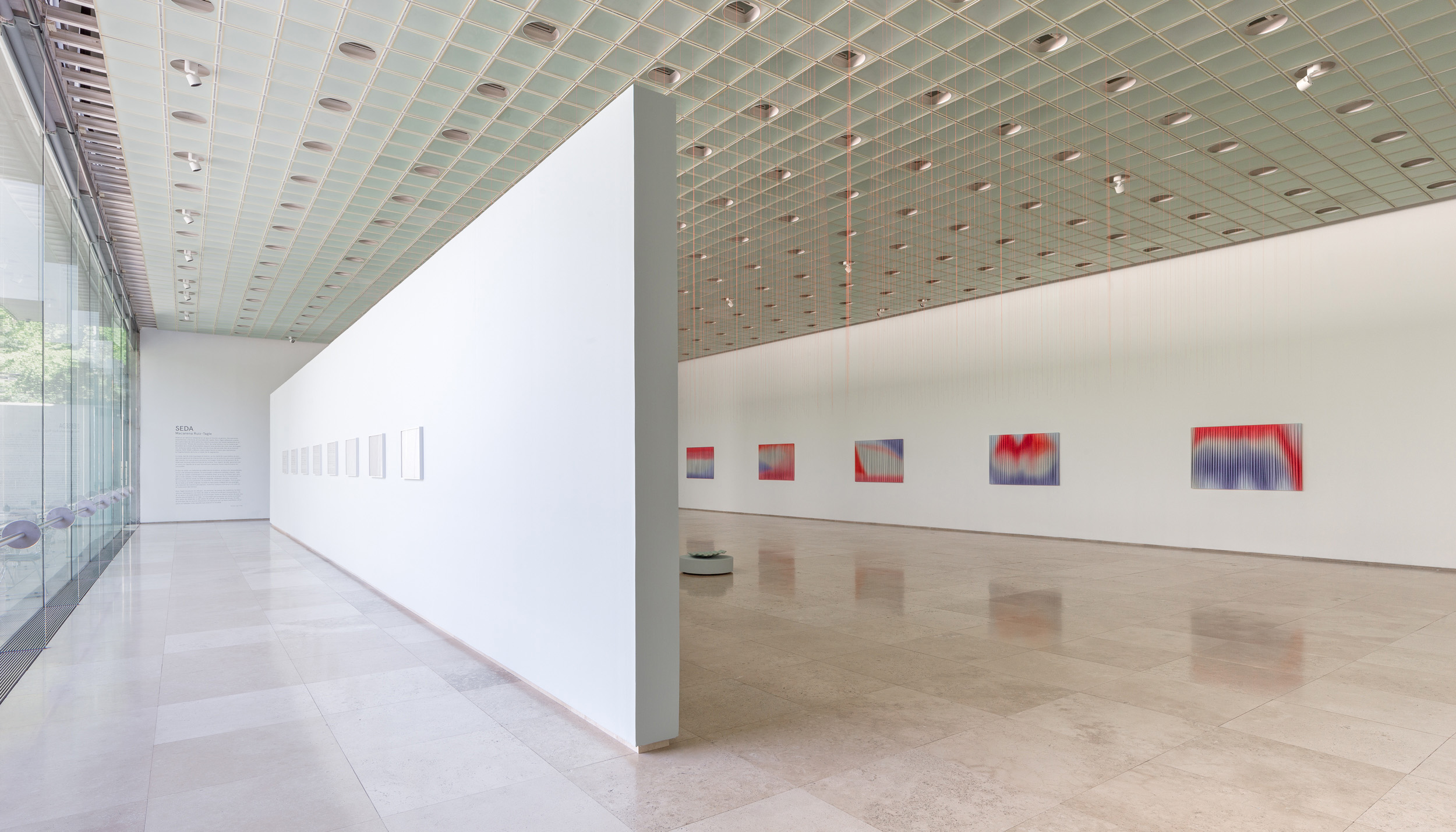
View of the Sala Principal room space: size 24m in length x 15m in width x 5m in height
Photo: Felipe Ugalde

View of the empty space or 'ma' that accentuates the distance between exhibits, creating a sense of contemplative separation within the gallery
Photo: Felipe Ugalde
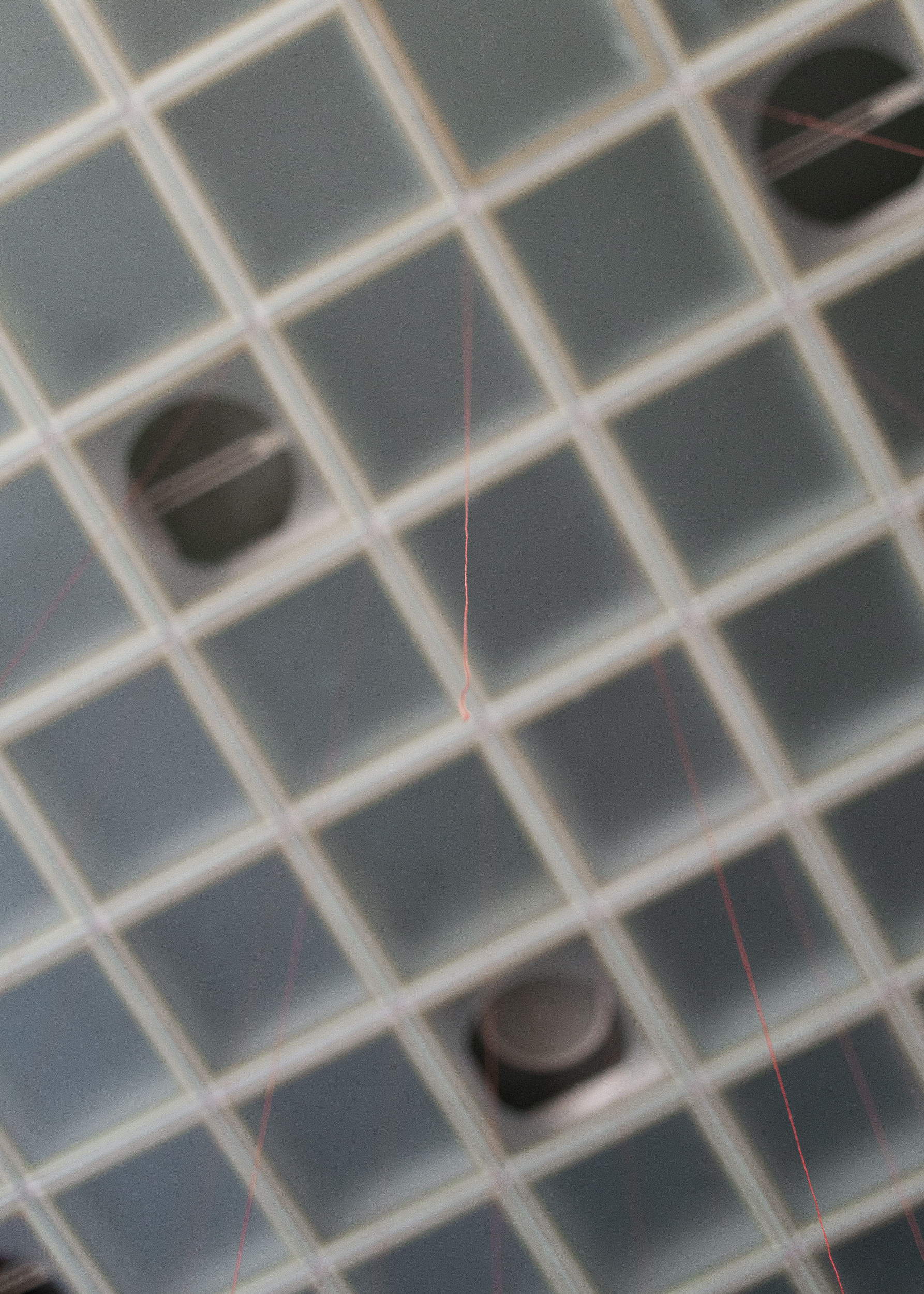
Detail of a single silk thread hanging from the glass ceiling
Photo: Felipe Ugalde
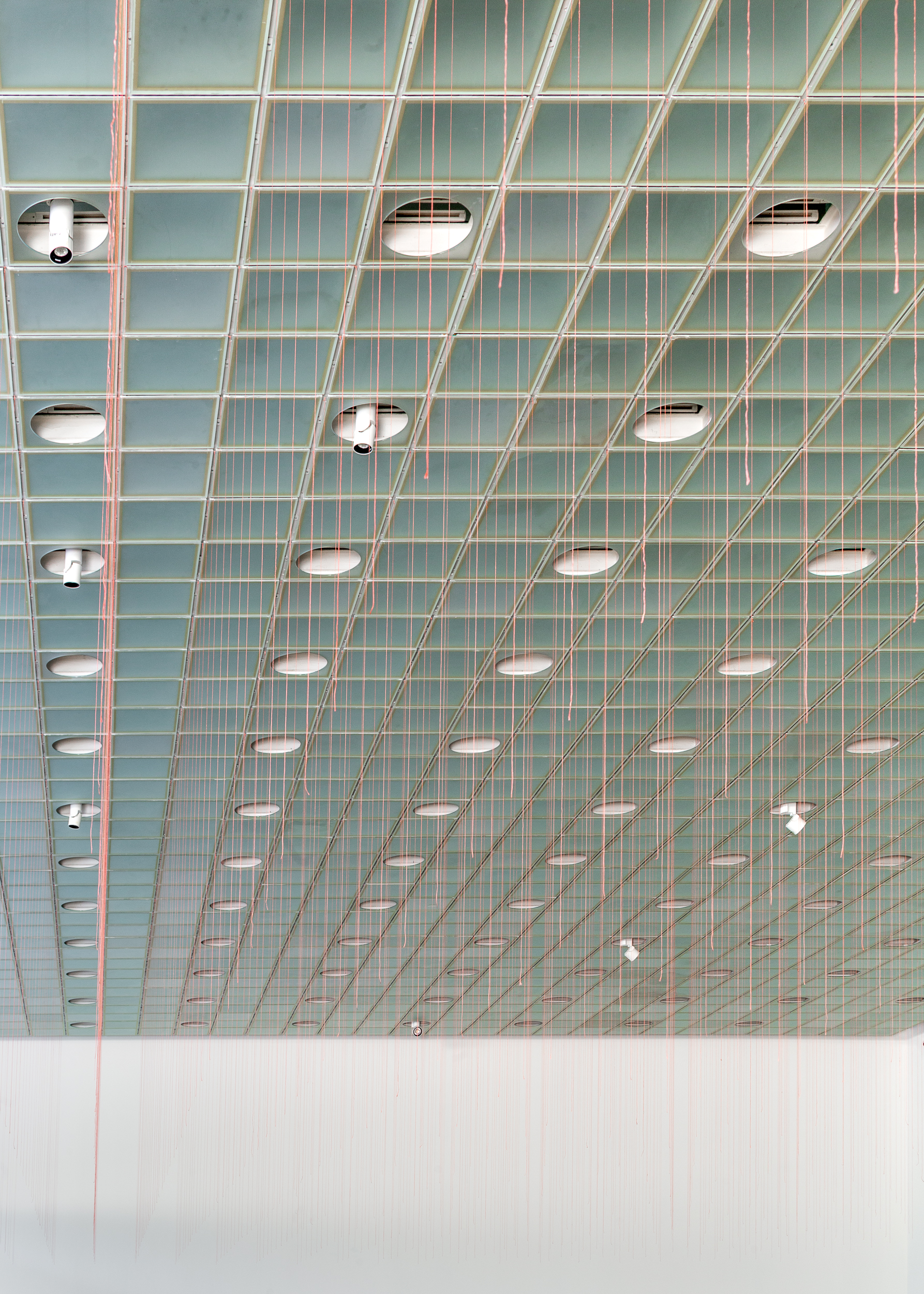
View of the multiplicity of silk threads hanging from the glass ceiling, subtle yet present
Photo: Felipe Ugalde
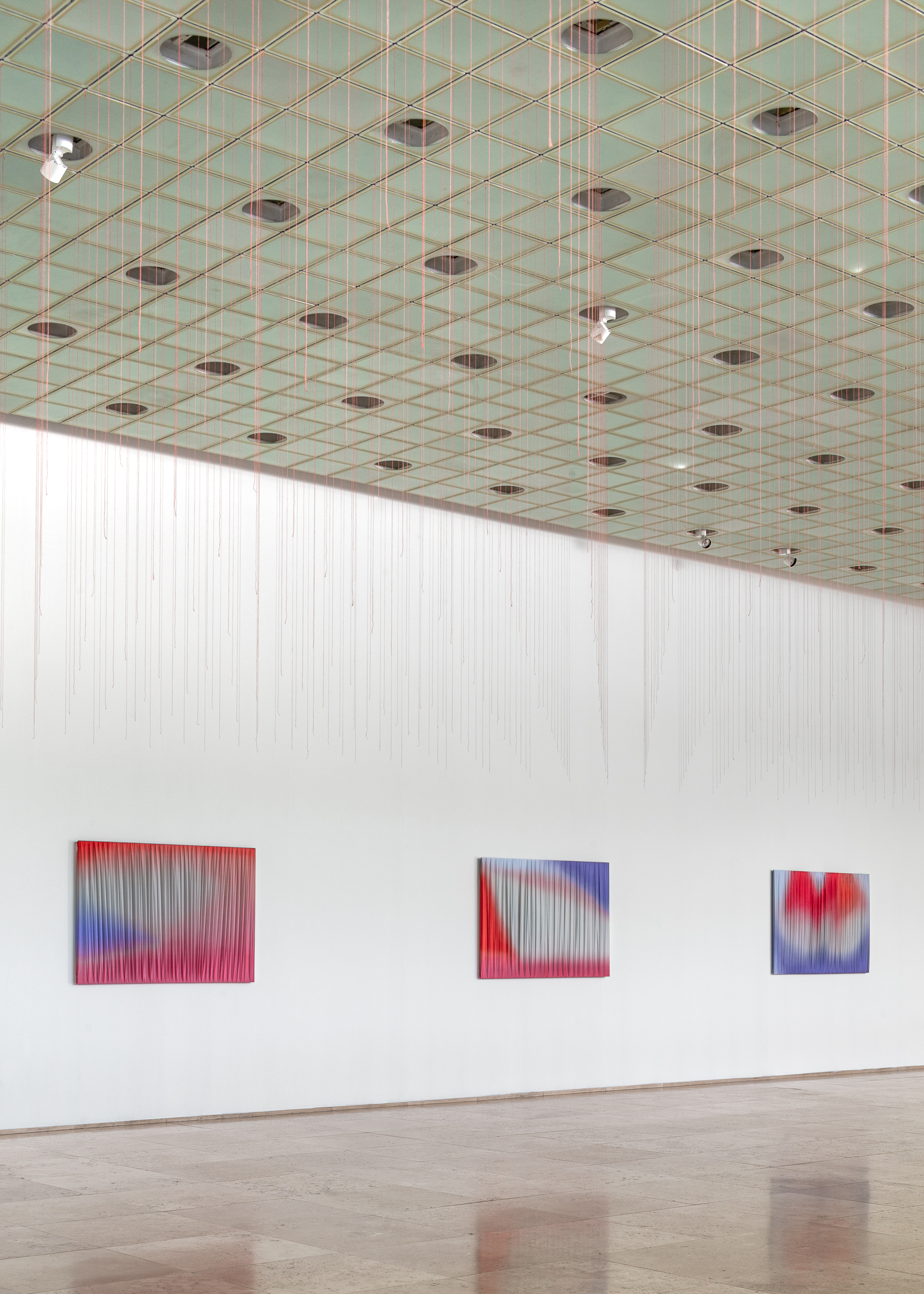
View of the empty space or 'ma' that accentuates the distance between exhibits
Photo: Felipe Ugalde
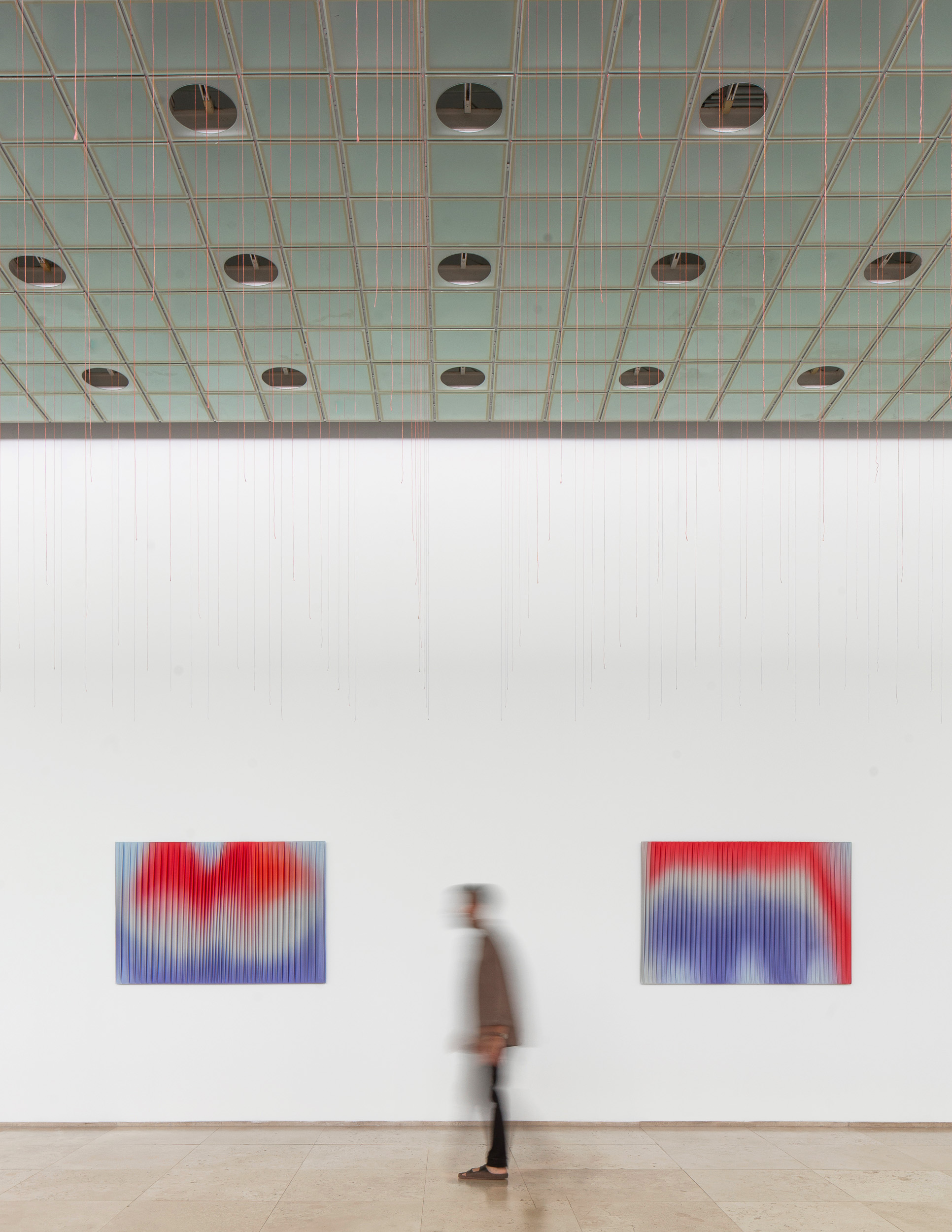
Detail showing scale with a visitor present
Photo: Felipe Ugalde
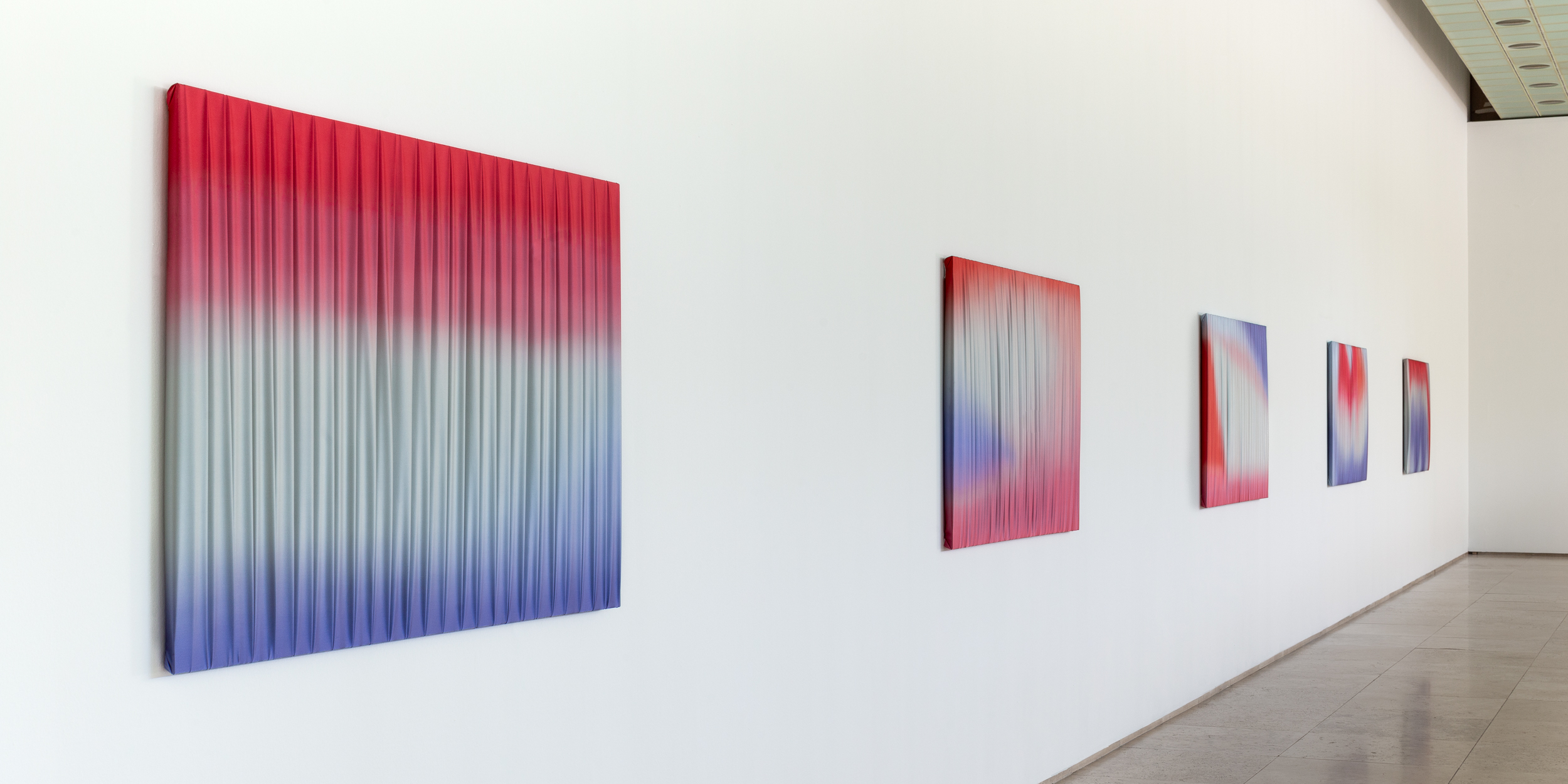
Seda Series, hand-painted silk and dye, 106 x 160 cm
Photo: Felipe Ugalde
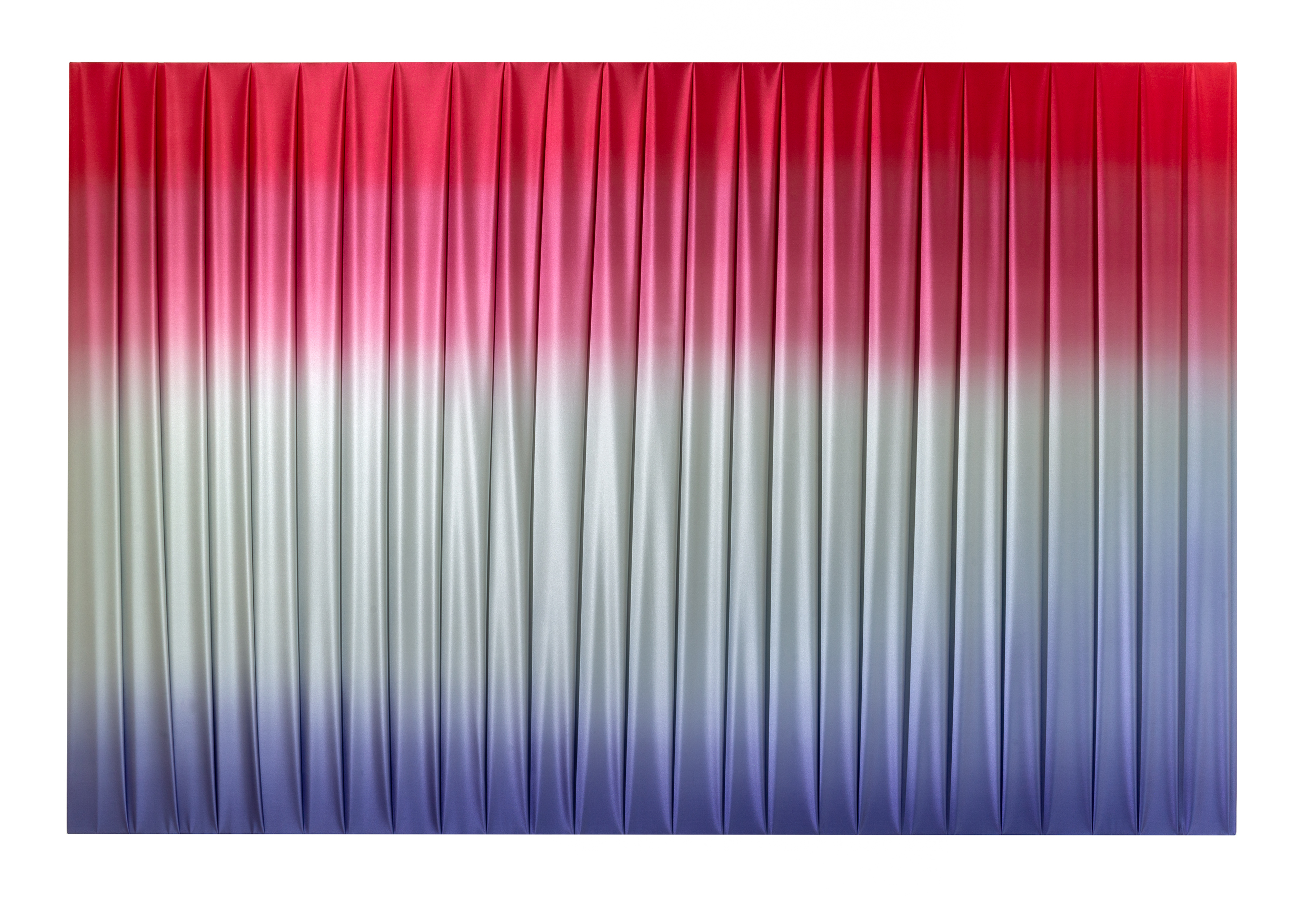
Seda I, hand-painted silk and dye, 106 x 160 cm
Photo: Felipe Ugalde
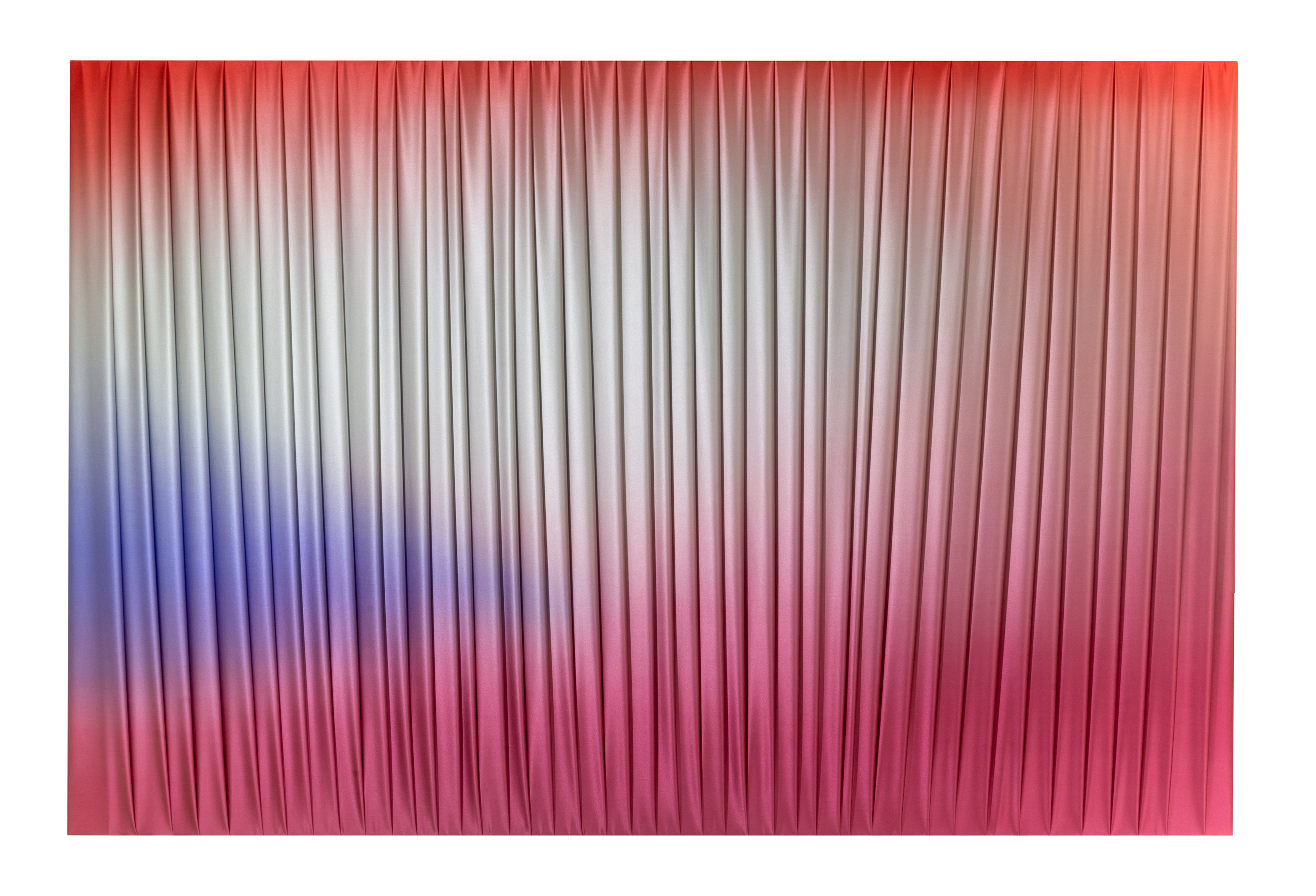
Seda II, hand-painted silk and dye, 106 x 160 cm
Photo: Felipe Ugalde

Seda III, hand-painted silk and dye, 106 x 160 cm
Photo: Felipe Ugalde
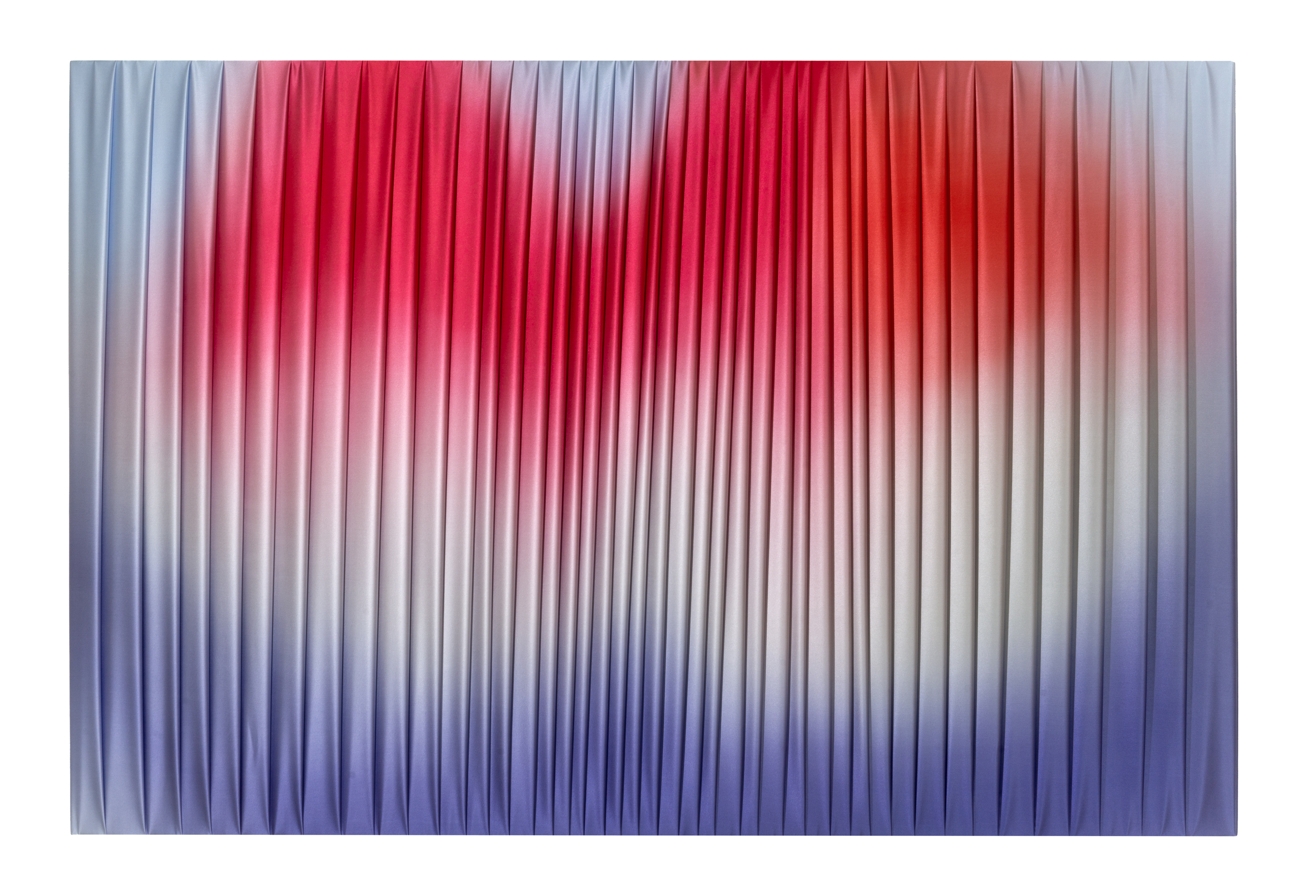
Seda IV, hand-painted silk and dye, 106 x 160 cm
Photo: Felipe Ugalde
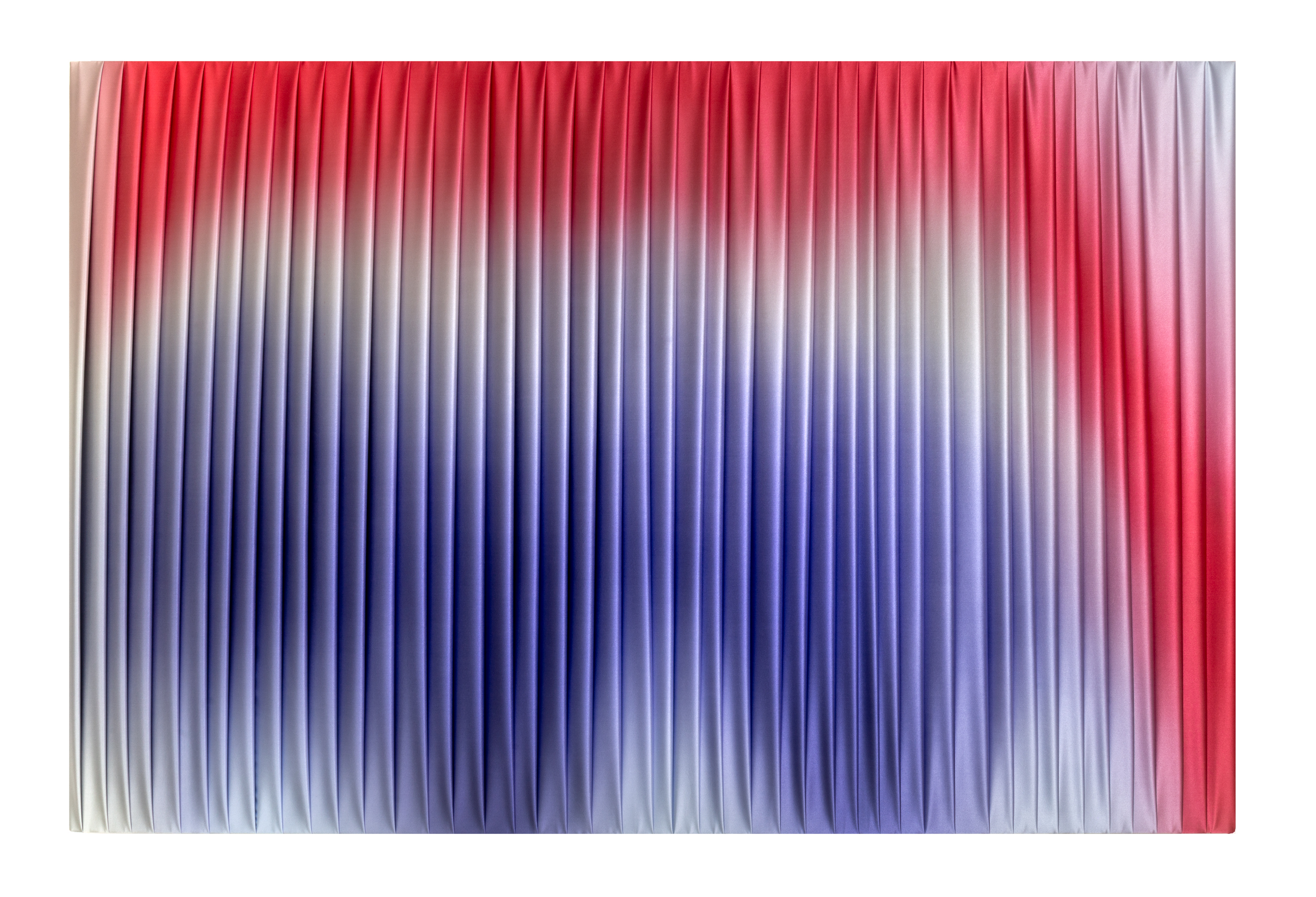
Seda V, hand-painted silk and dye, 106 x 160 cm
Photo: Felipe Ugalde

Seda III, detail of gradiant coloration and asimetric folds
Photo: Felipe Ugalde
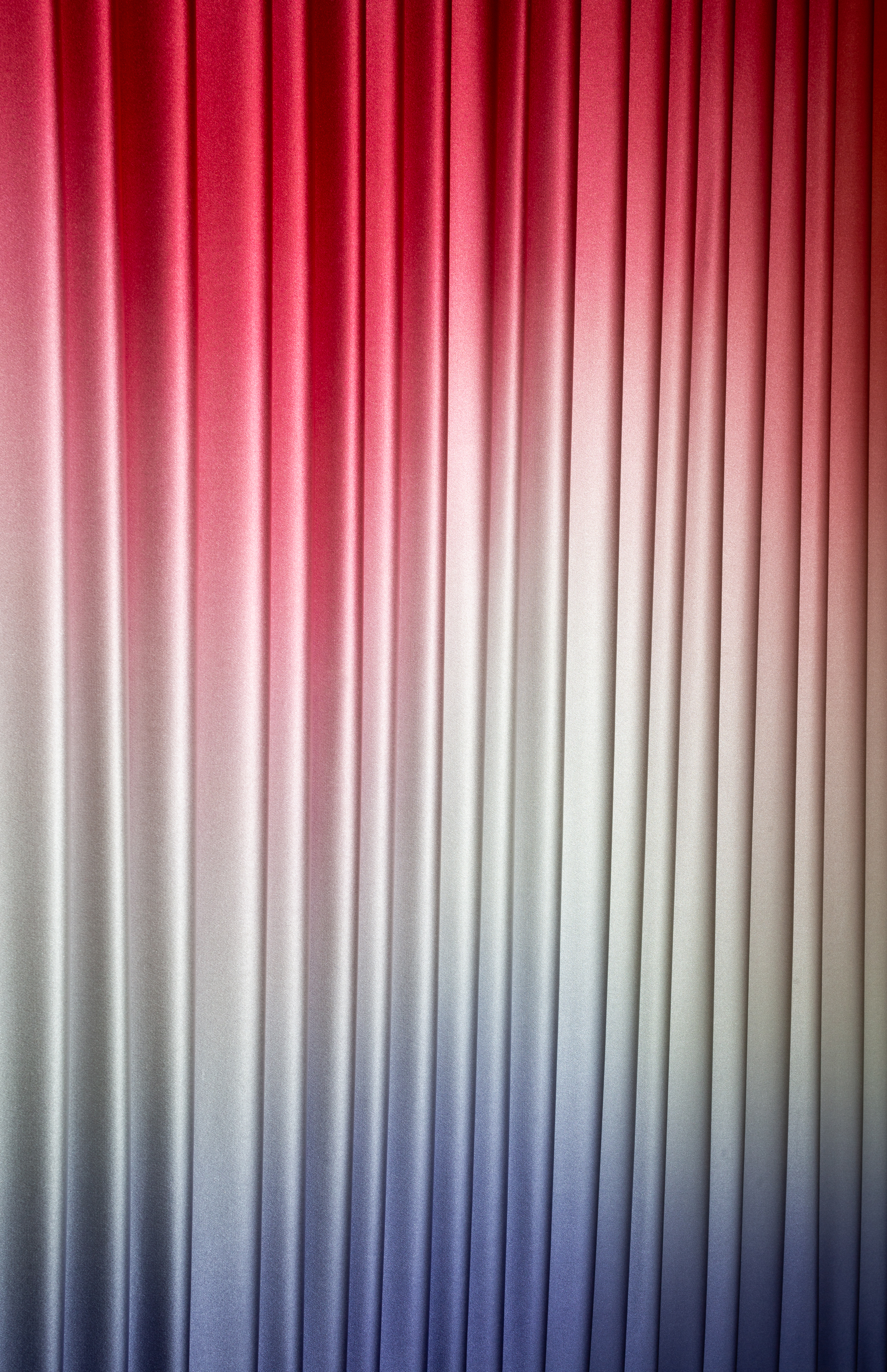
Seda IV, detail of gradiant coloration and asimetric folds
Photo: Felipe Ugalde
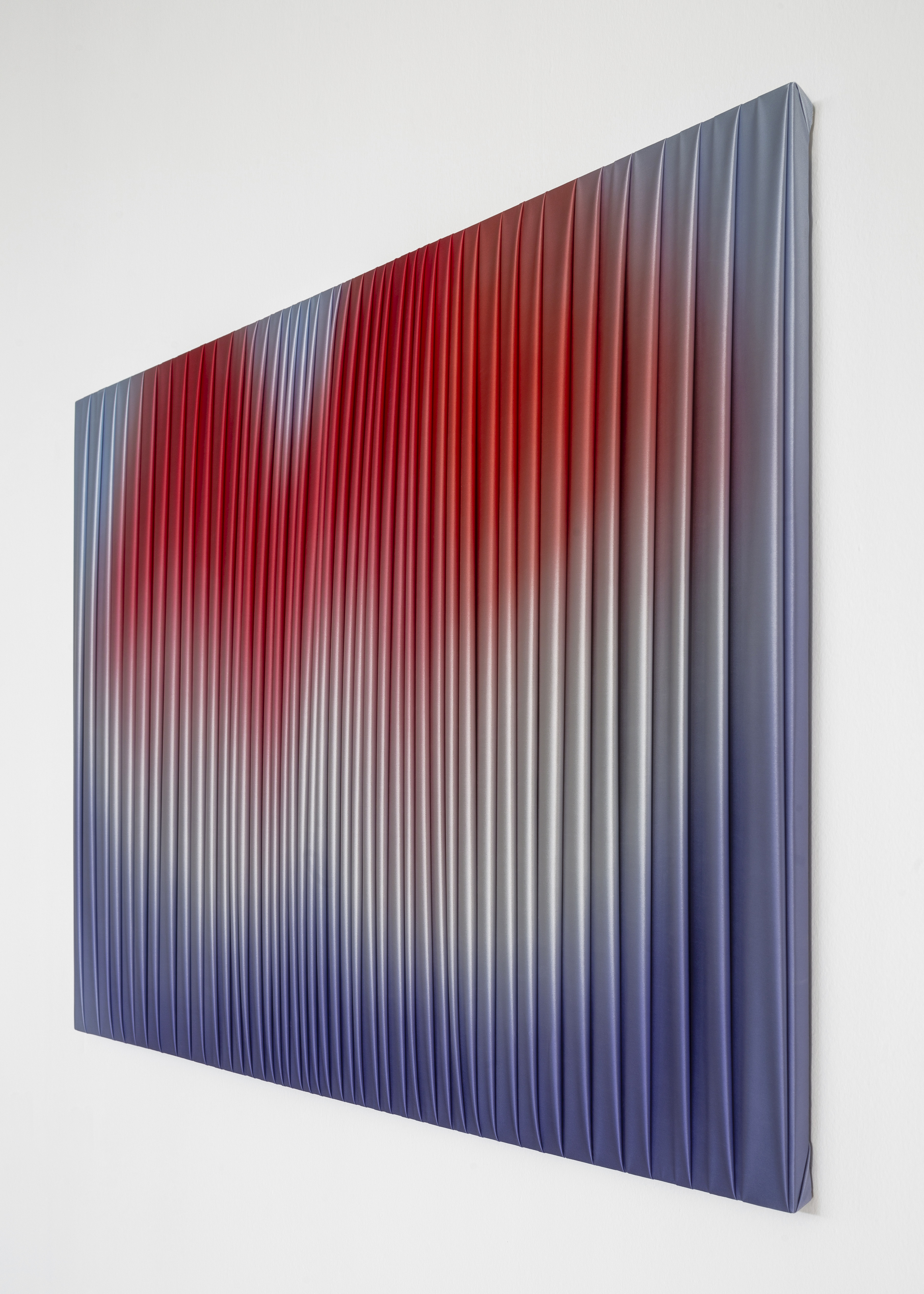
Seda IV, detail of gradiant coloration and asimetric folds
Photo: Felipe Ugalde
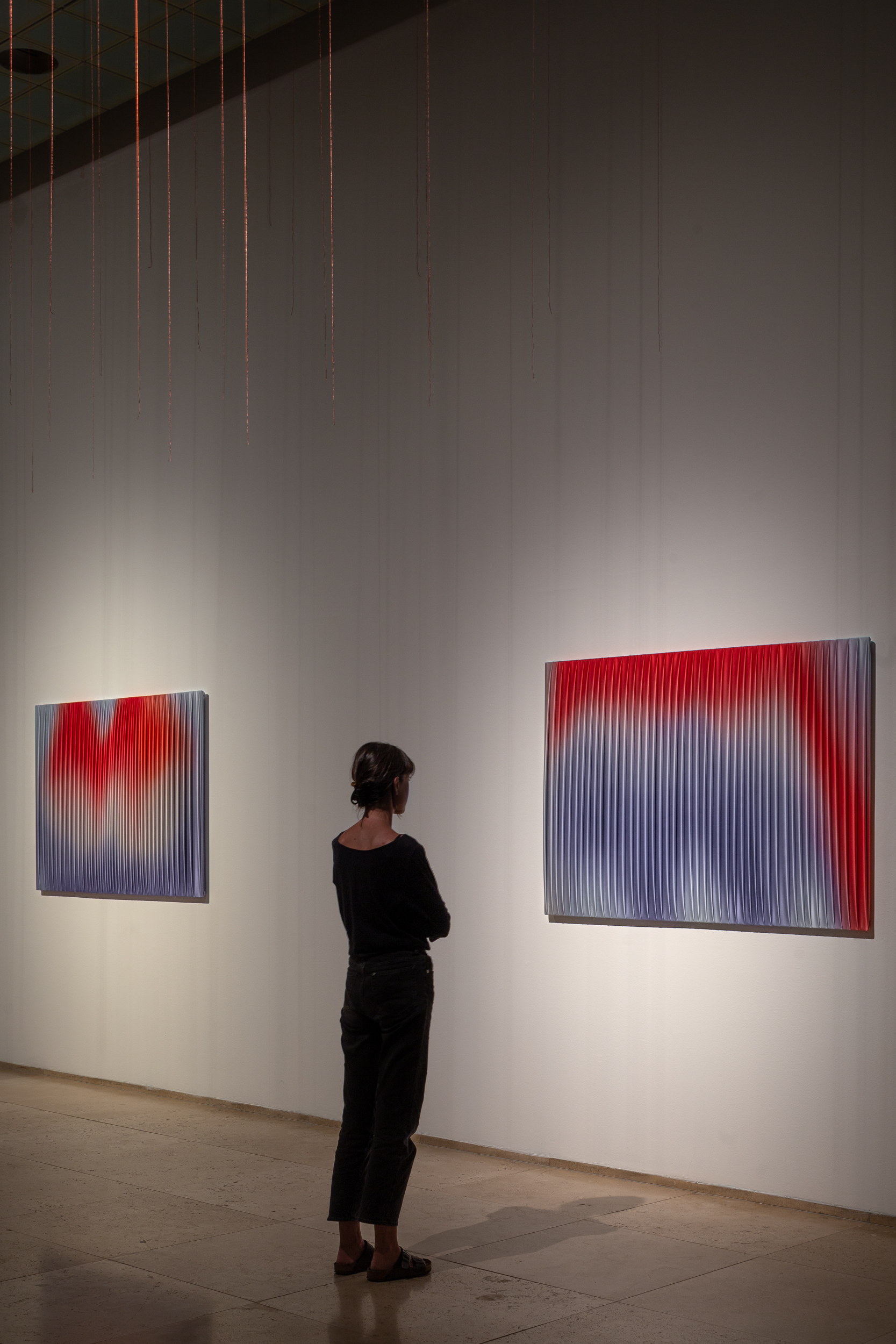
Detail showing the scale of the exhibits with a visitor
Photo: Felipe Ugalde
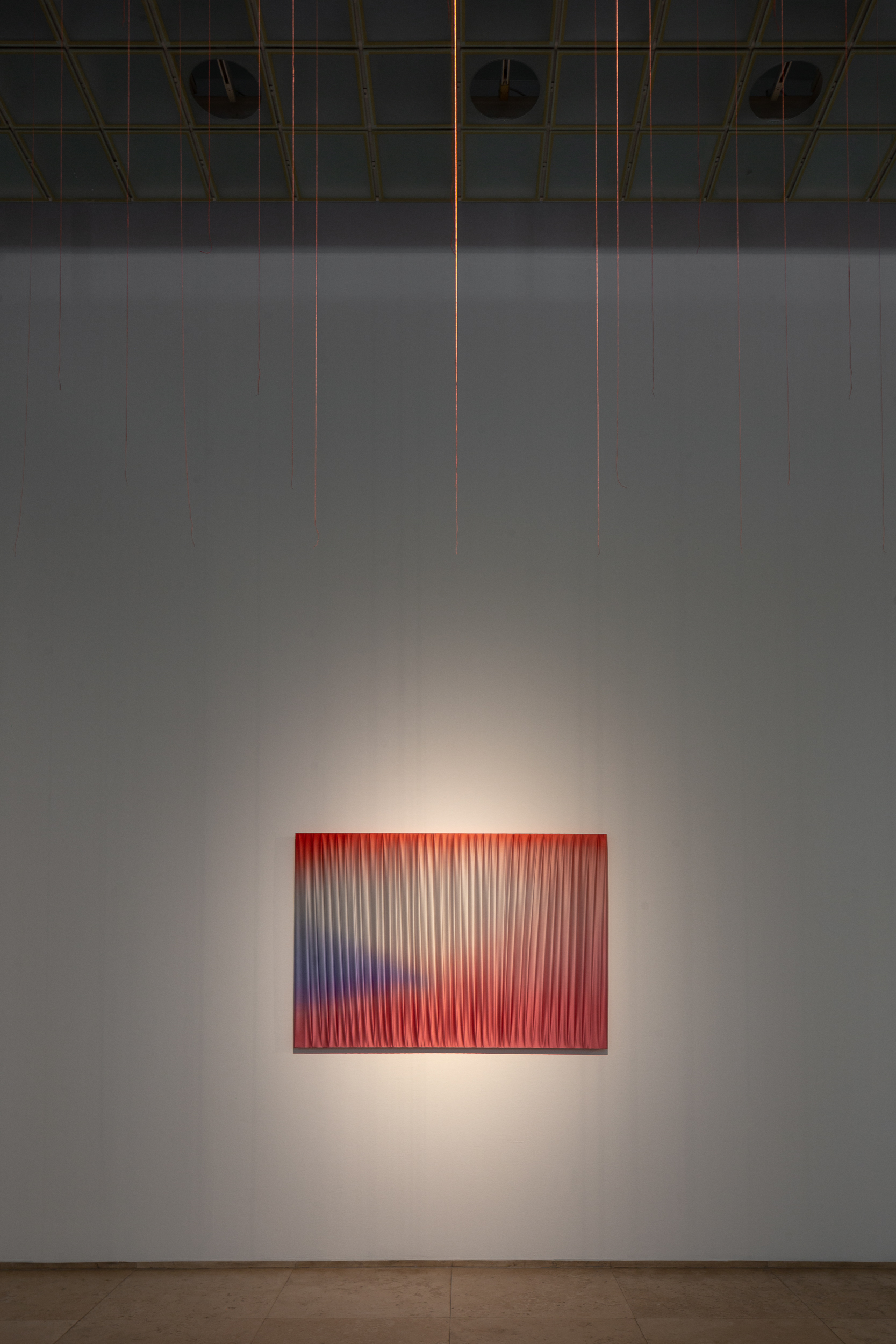
Detail of the silk's luminescence
Photo: Felipe Ugalde
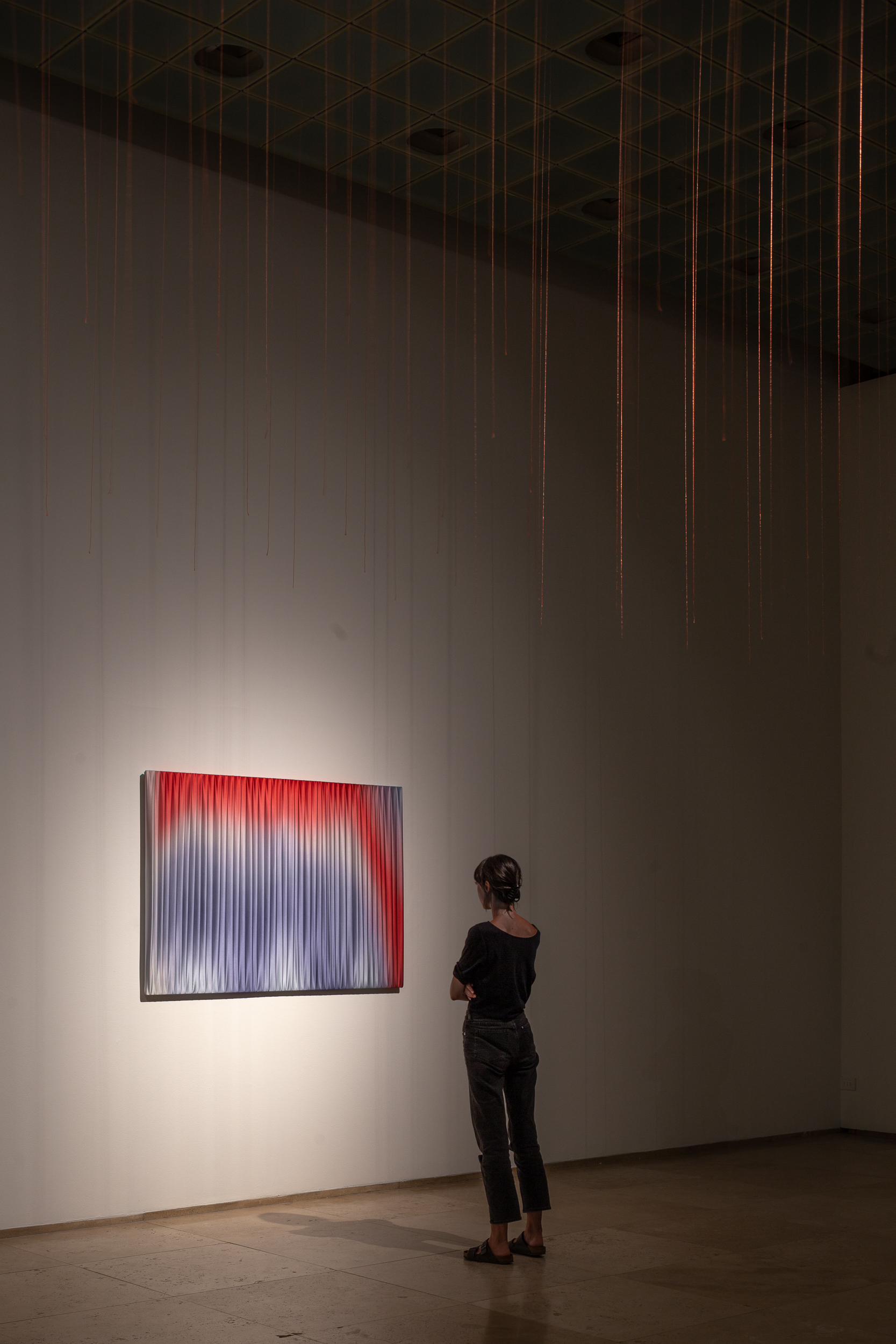
Detail showing scale with a visitor present
Photo: Felipe Ugalde
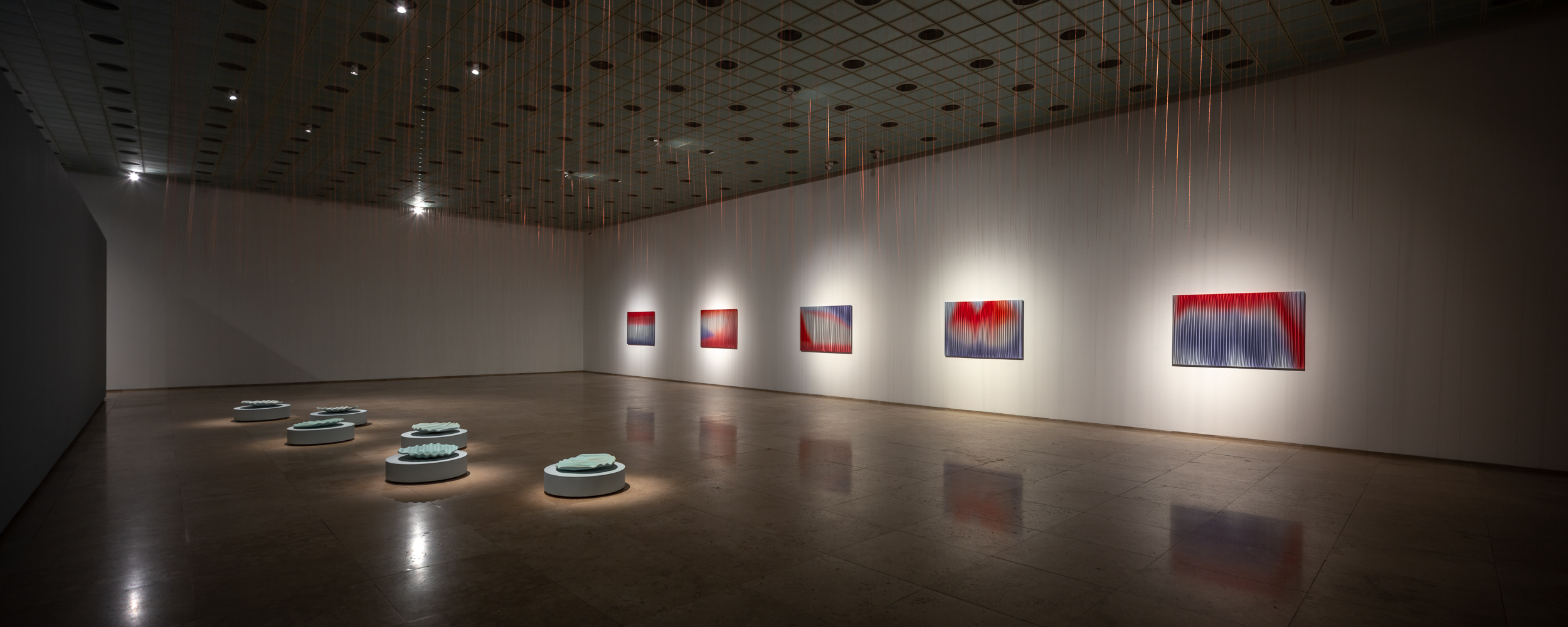
Lighting in the space showcases the brilliance of the silk material
Photo: Felipe Ugalde
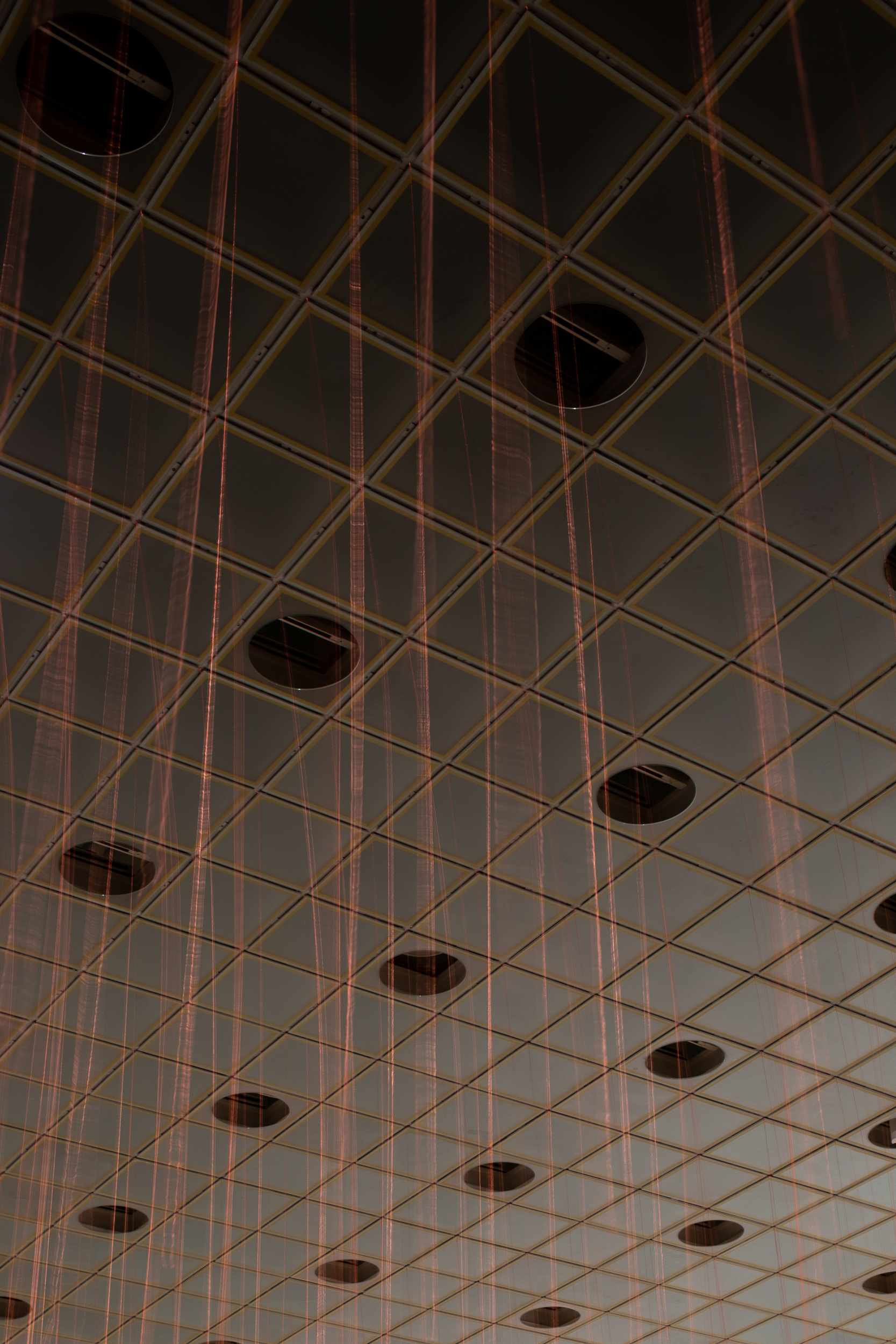
Lighting in the space showcases the brilliance of the silk material
Photo: Felipe Ugalde
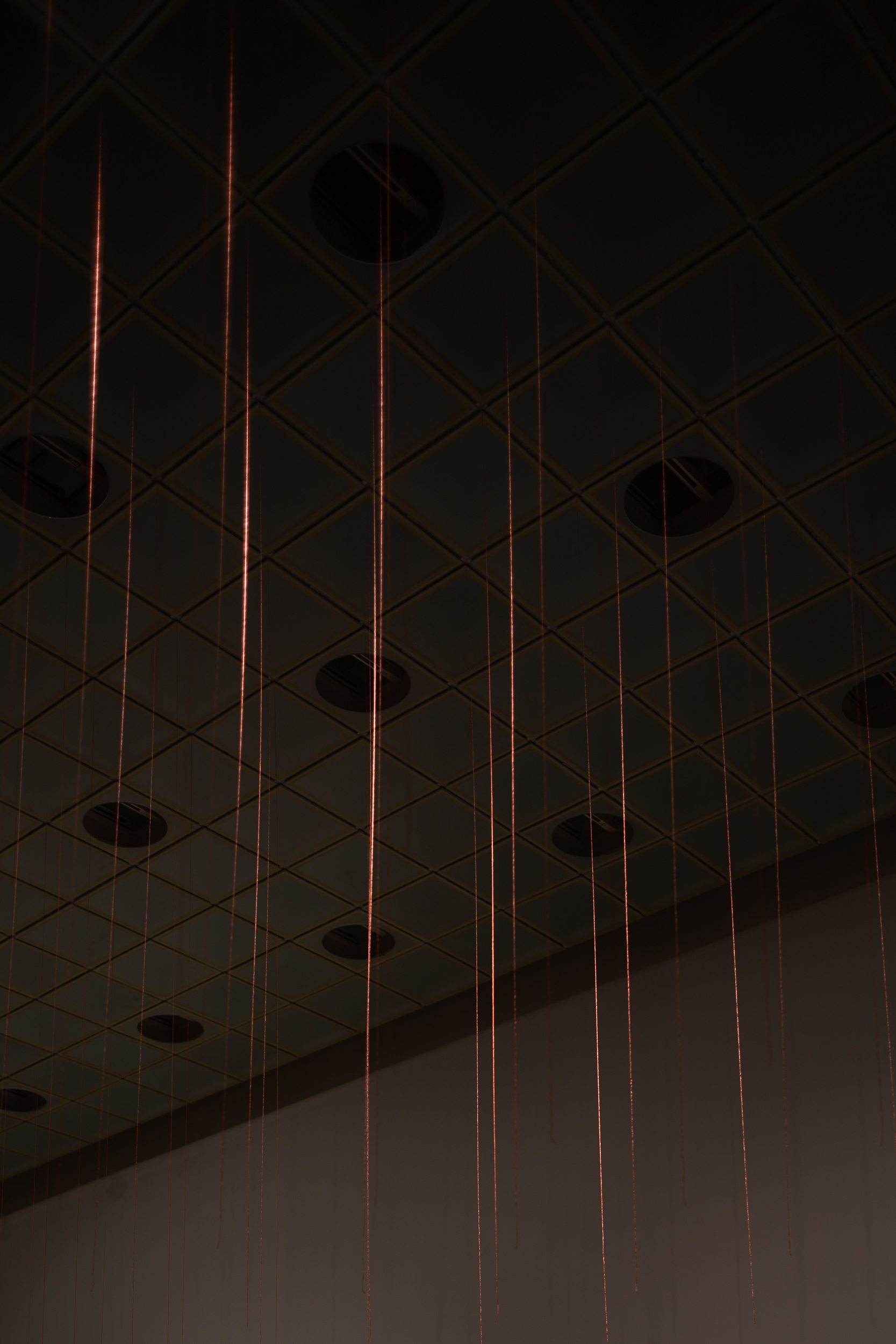
Lighting in the space showcases the brilliance of the silk material
Photo: Felipe Ugalde
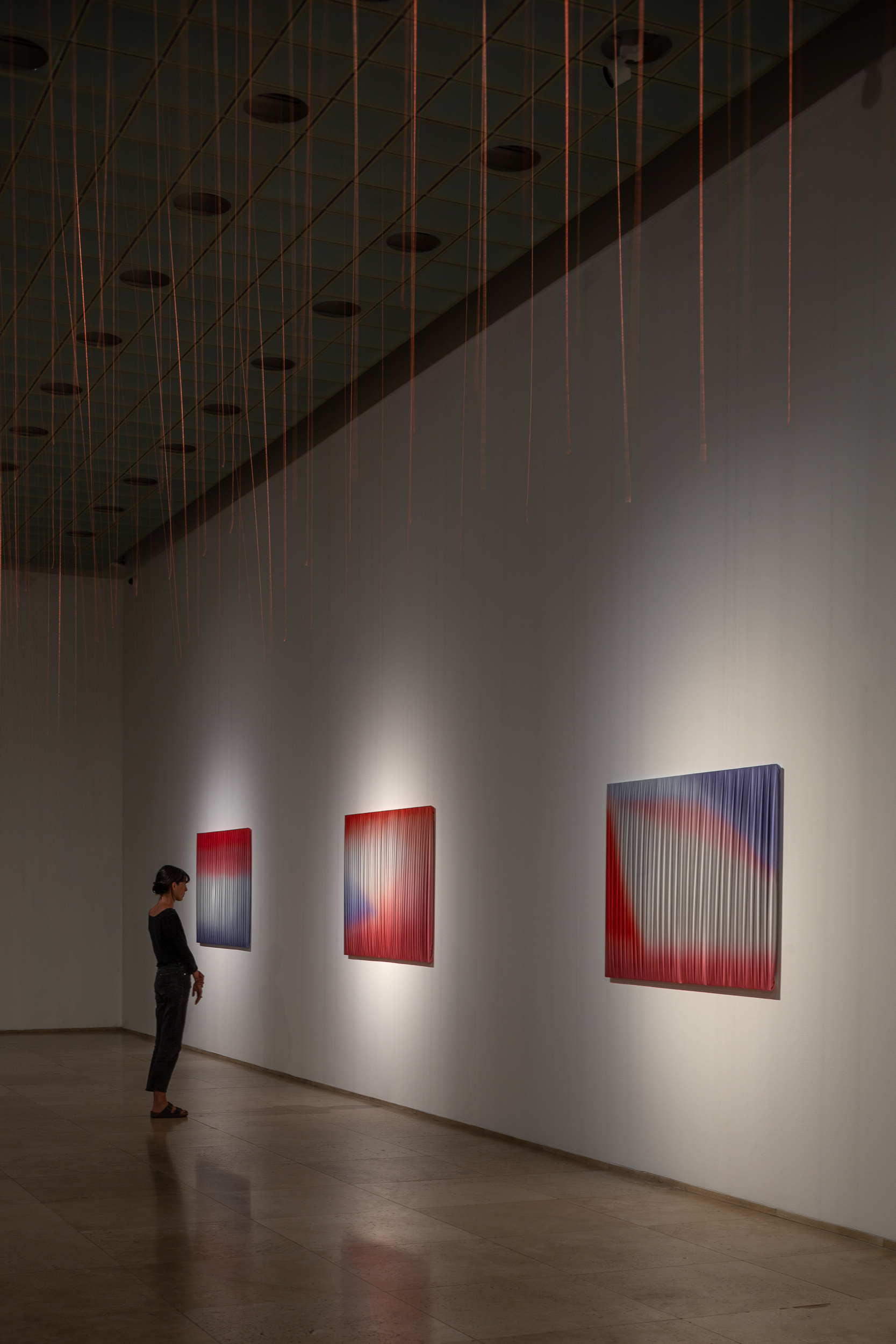
Lighting in the space showcases the brilliance of the silk material
Photo: Felipe Ugalde
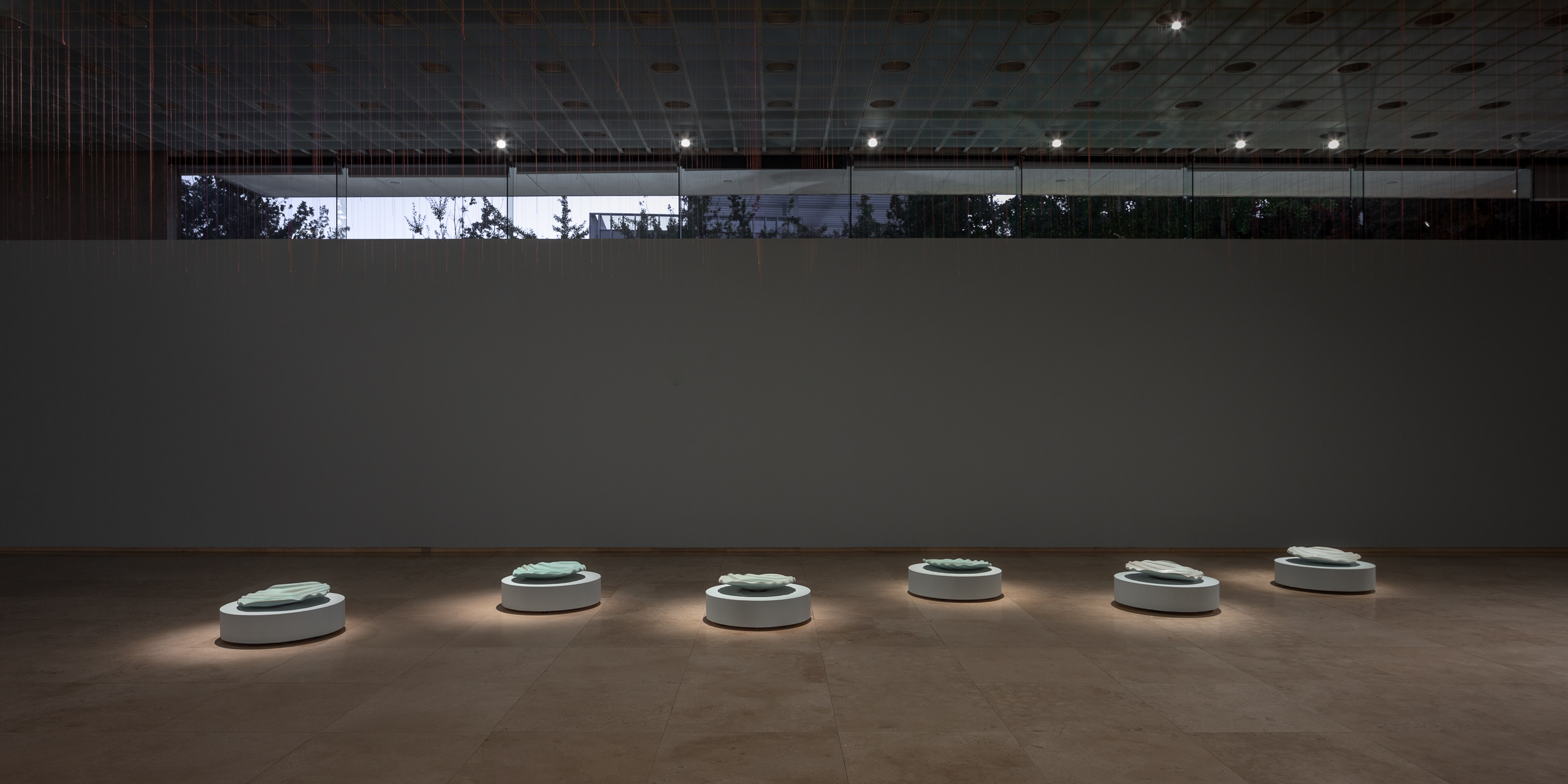
Lighting in the space showcases the ceramic pieces
Photo: Felipe Ugalde

Water takes shape series of stoneware pieces with water
Photo: Felipe Ugalde
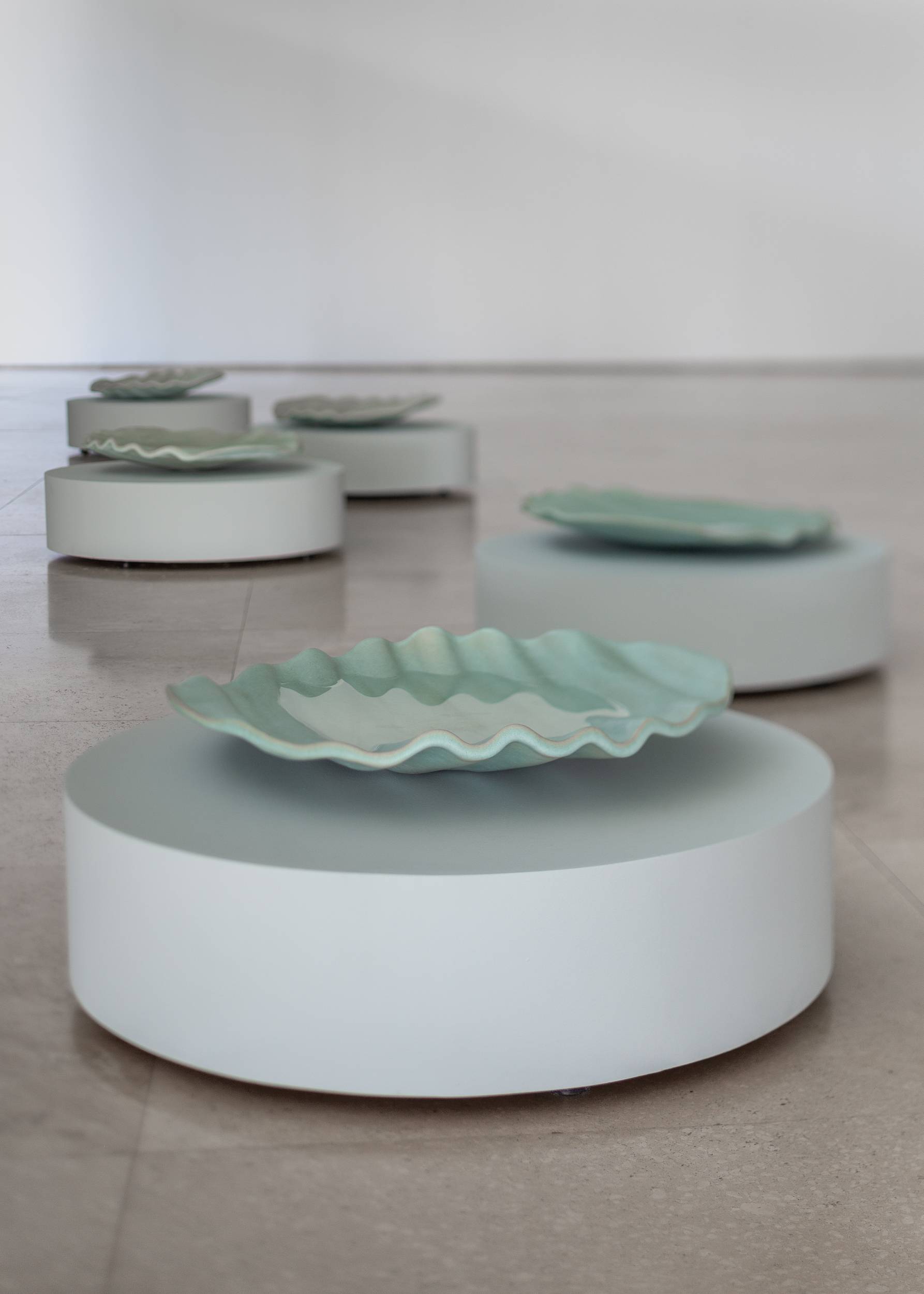
Water takes shape series of stoneware pieces with water
Photo: Felipe Ugalde

Water takes shape I, stoneware and water, 55 cm diameter
Photo: Felipe Ugalde
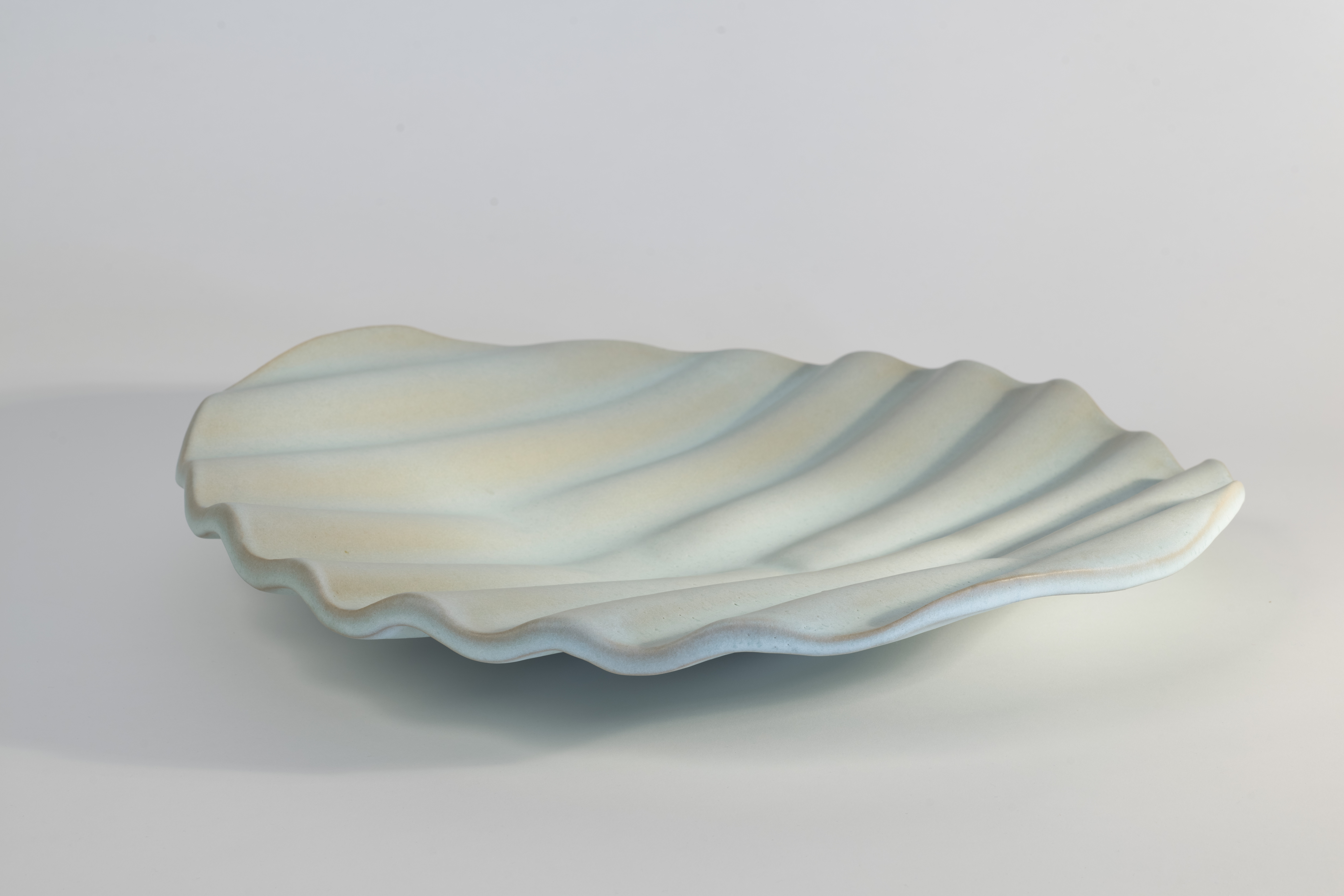
Water takes shape II, stoneware, 55 cm diameter
Photo: Bruno Giliberto
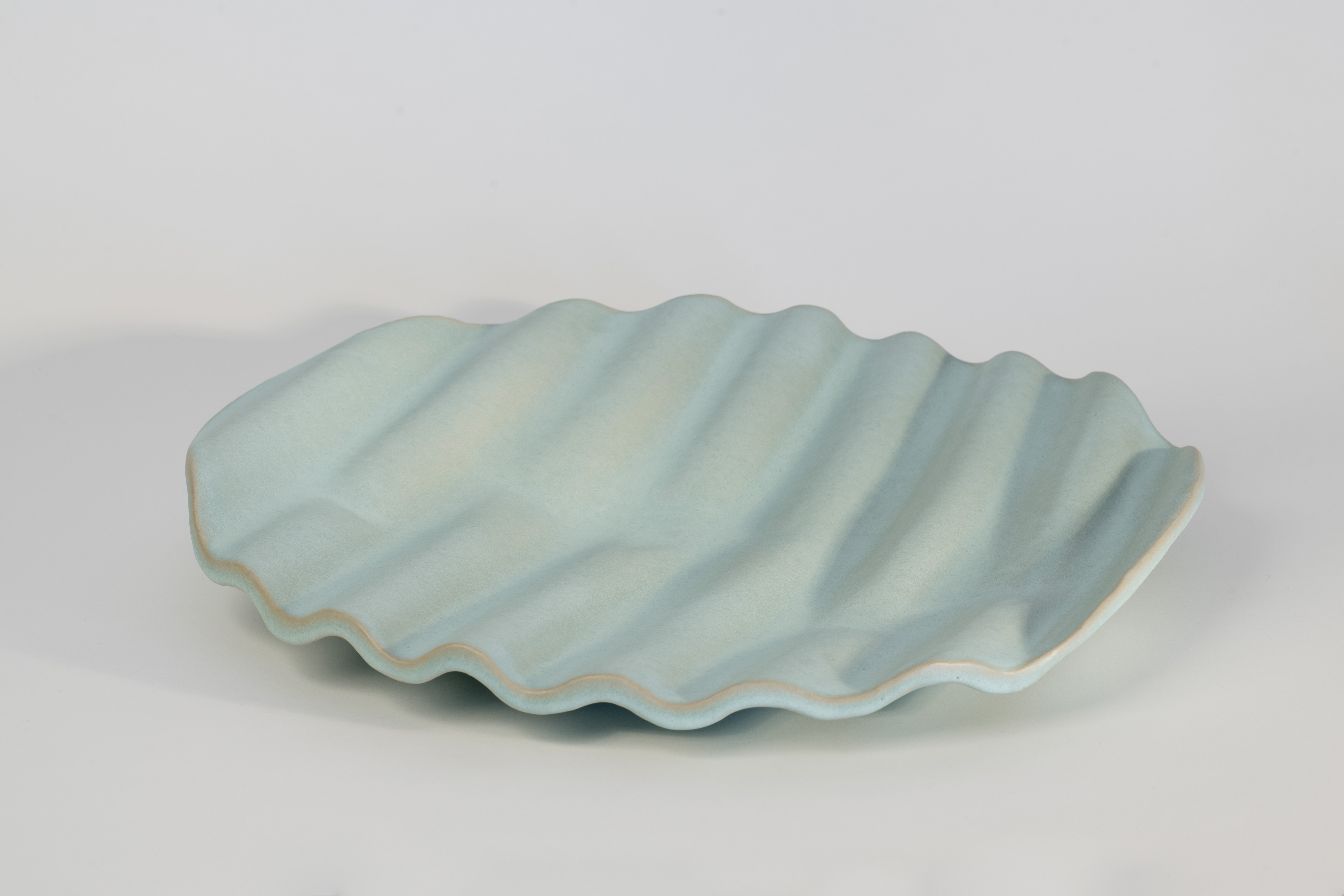
Water takes shape III, stoneware, 55 cm diameter
Photo: Bruno Giliberto

Water takes shape IV, stoneware and water, 55 cm diameter
Photo: Felipe Ugalde

Water takes shape V, stoneware and water, 55 cm diameter
Photo: Felipe Ugalde

View of the drawing series entitled 'Komorebi' in the hallway of the Sala Principal. The sunlight filtering through the trees gradually illuminates the wall space
Photo: Felipe Ugalde
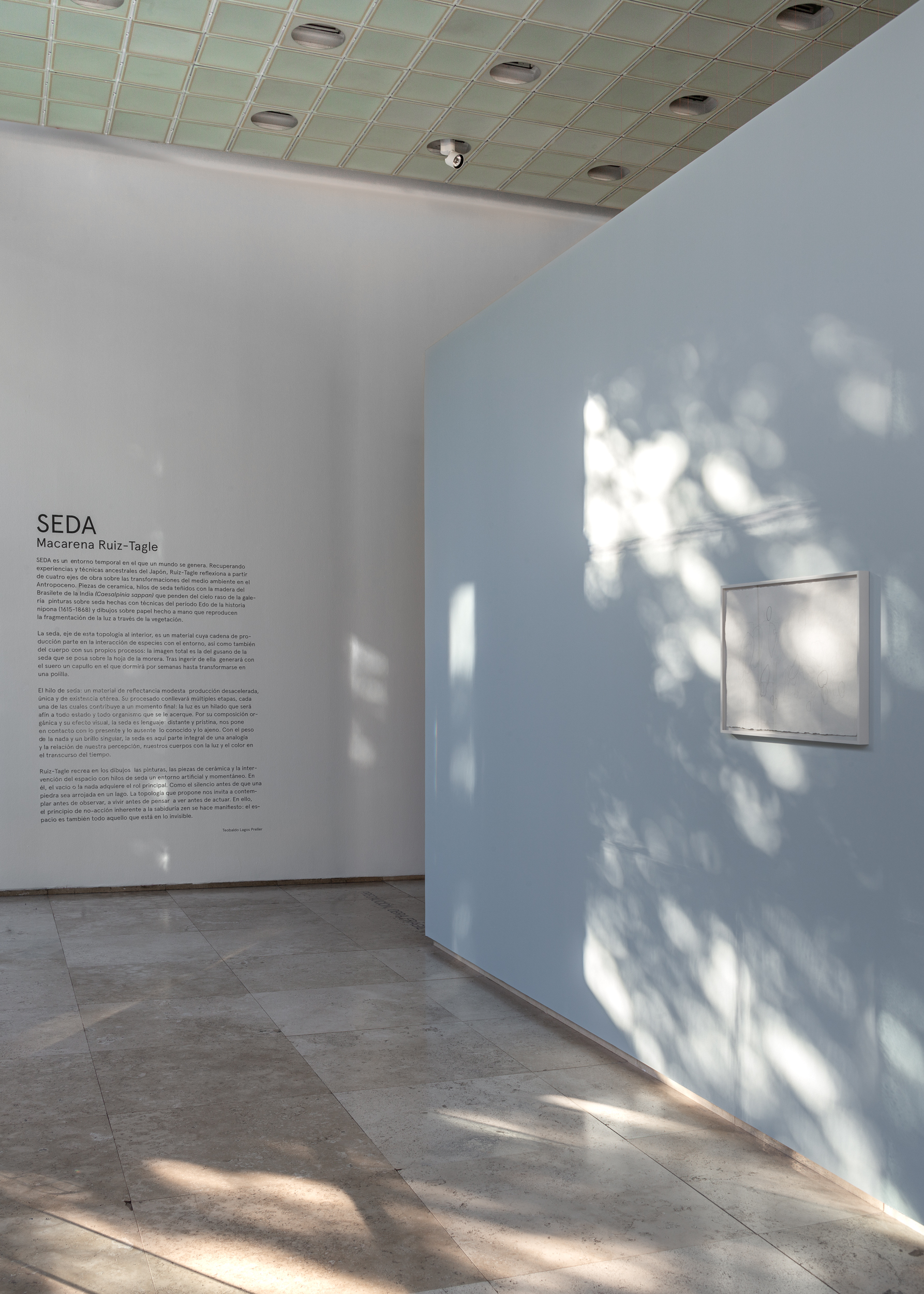
View of the drawing series entitled 'Komorebi' in the hallway of the Sala Principal. The sunlight filtering through the trees gradually illuminates the wall space
Photo: Felipe Ugalde
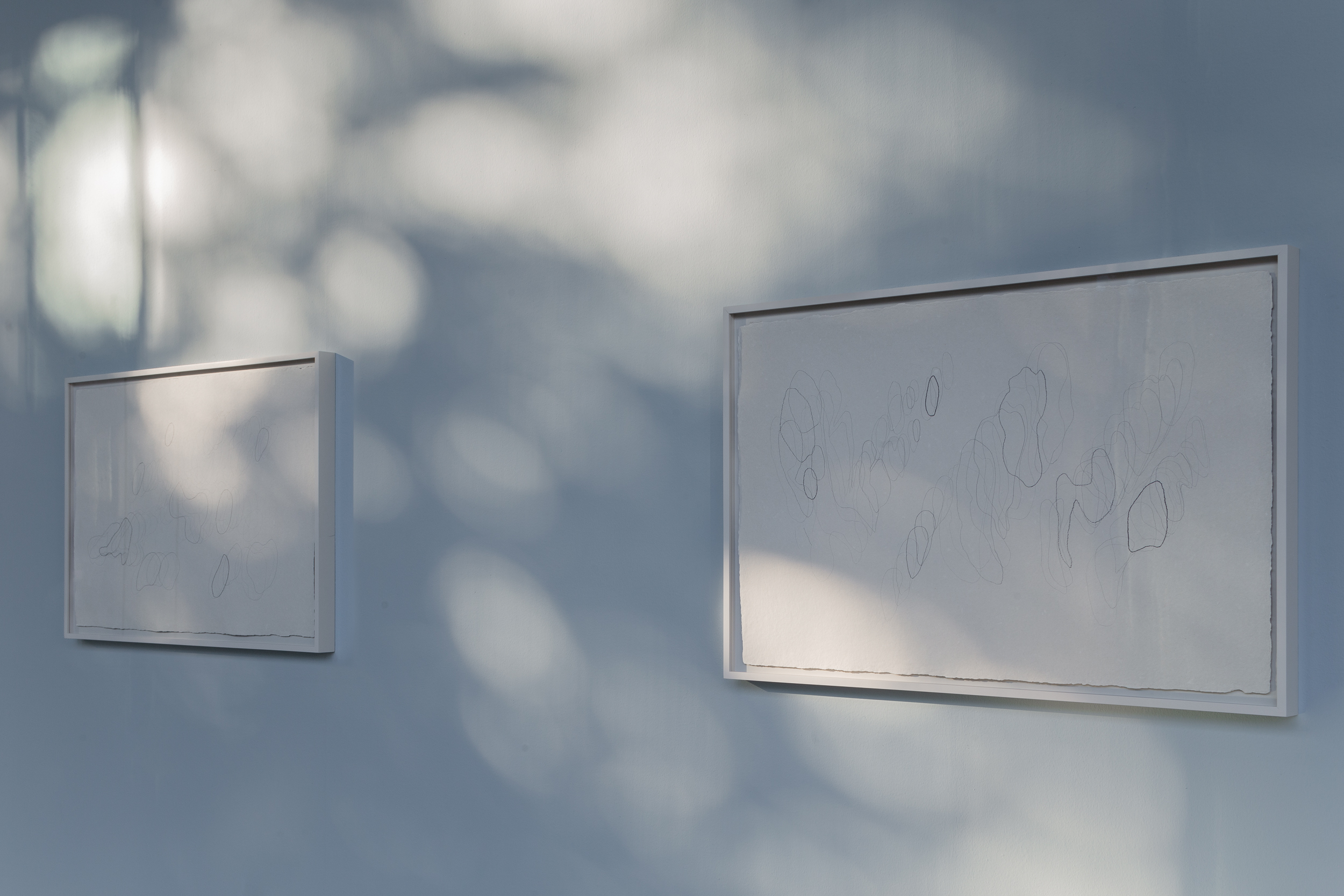
View of the sunlight filtering through the outside ginko trees gradually illuminating the drawings
Photo: Felipe Ugalde
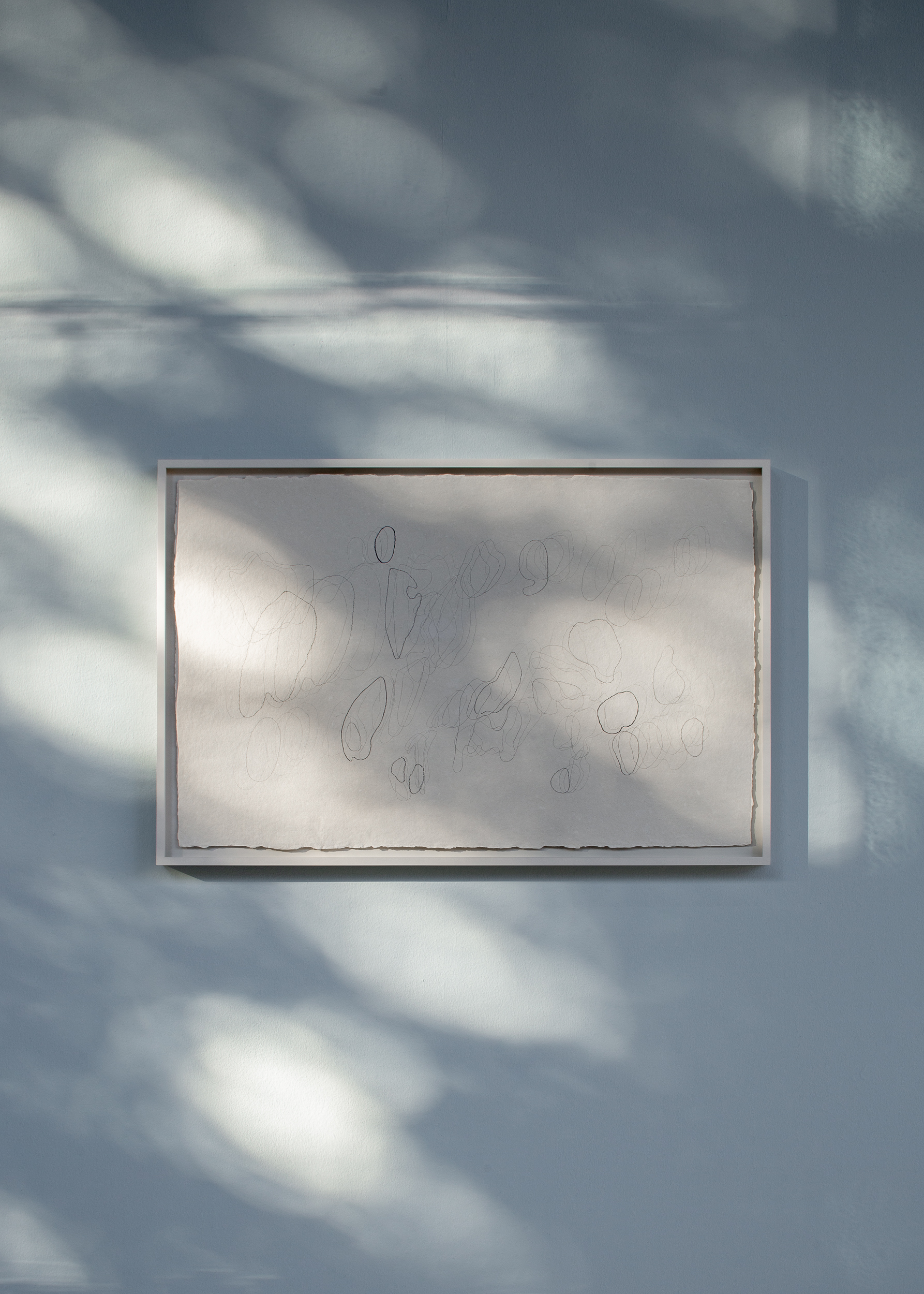
View of the sunlight filtering through the outside ginko trees gradually illuminating the drawings
Photo: Felipe Ugalde

View of the sunlight filtering through the outside ginko trees gradually illuminating the drawings
Photo: Felipe Ugalde
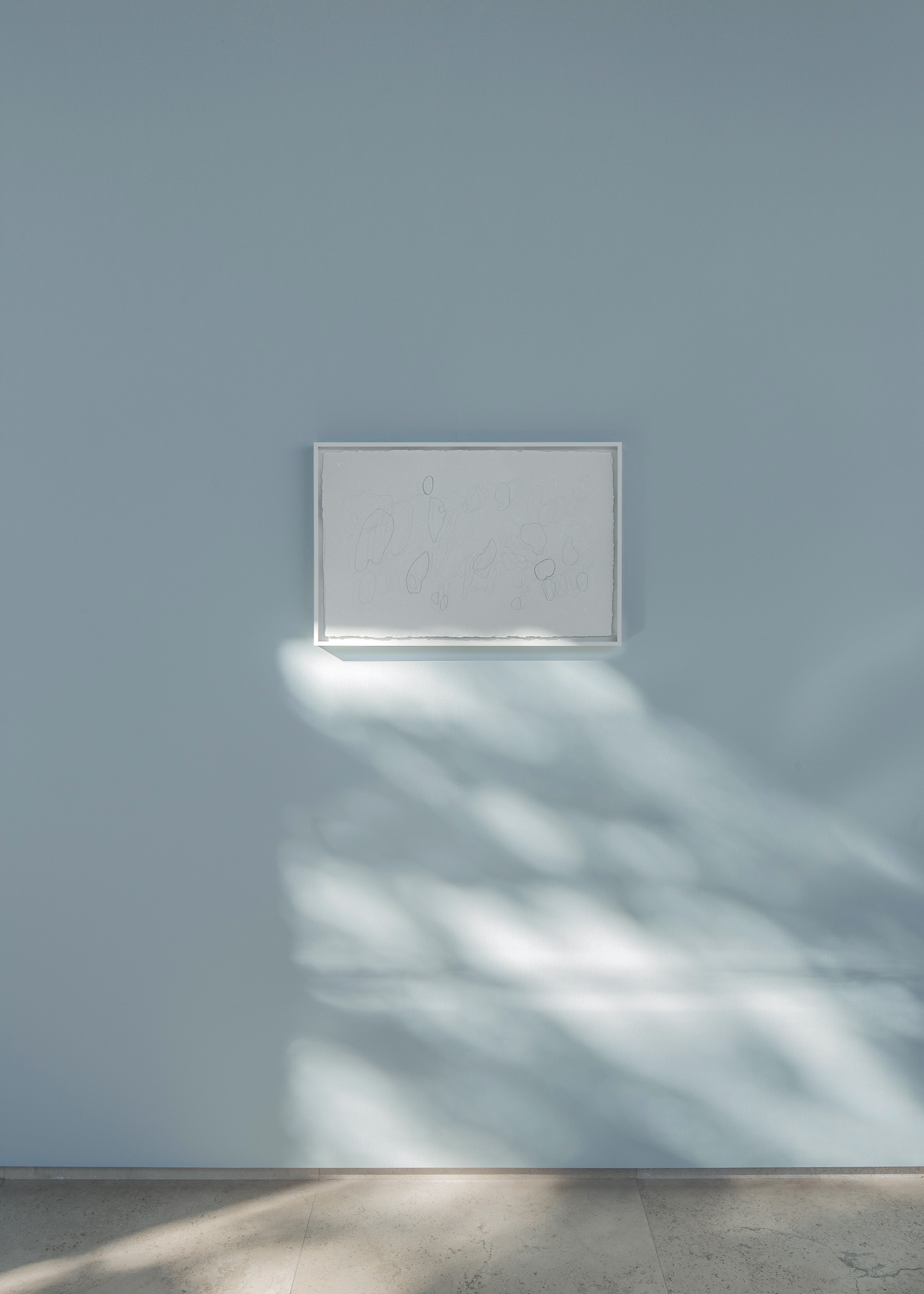
View of the sunlight filtering through the outside ginko trees gradually illuminating the drawings
Photo: Felipe Ugalde
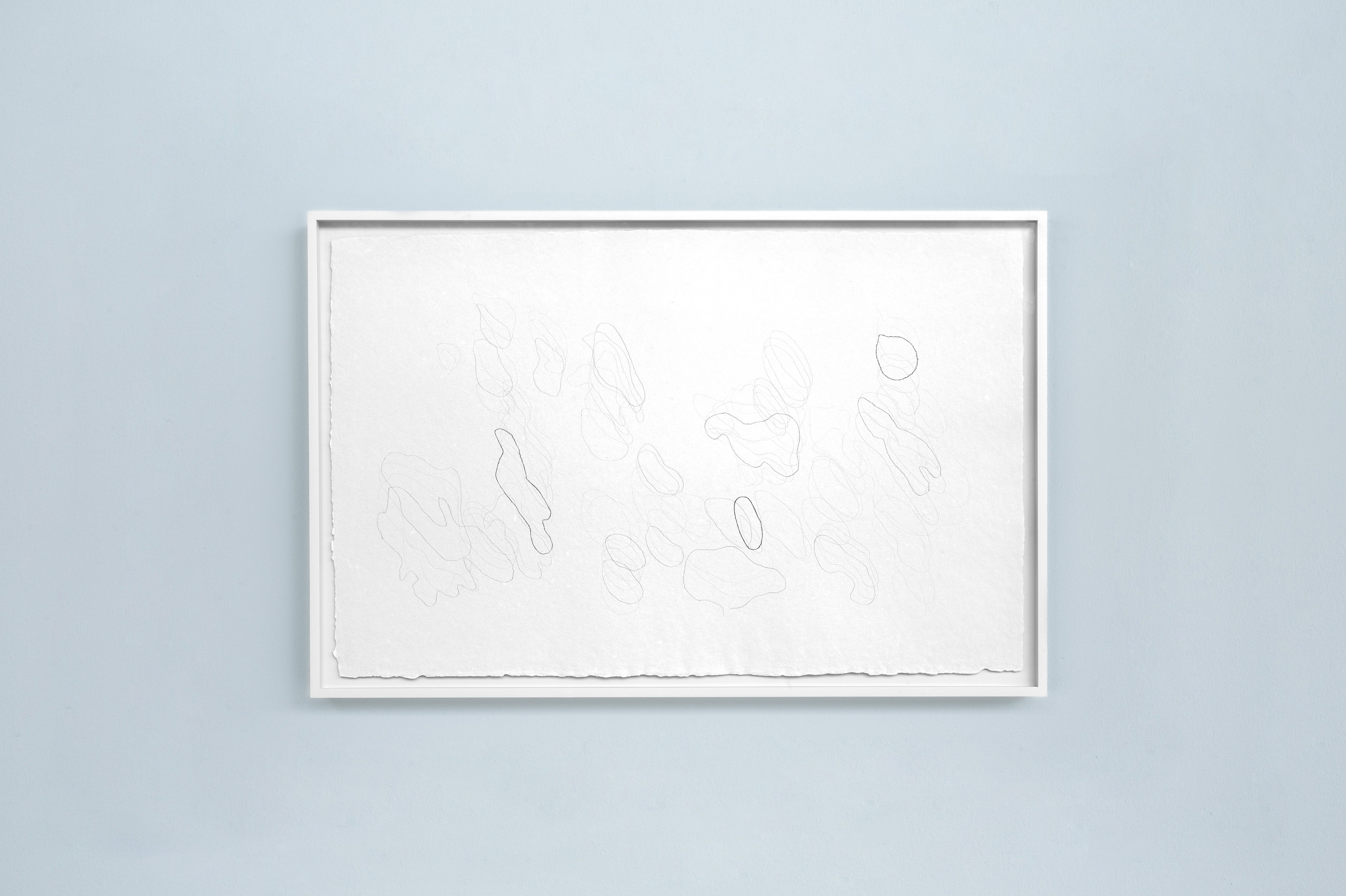
Komorebi V, graphite and hand made paper, 50 x 75 cm. A collection of eight graphite drawings on paper, wherein the artist meticulously depicts the interplay of light filtering through trees. Each drawing intricately captures the subtle movement of sunlight across the paper surface, functioning as both a chronological map of time and a contemplative reflection on transient moments.
Photo: Felipe Ugalde
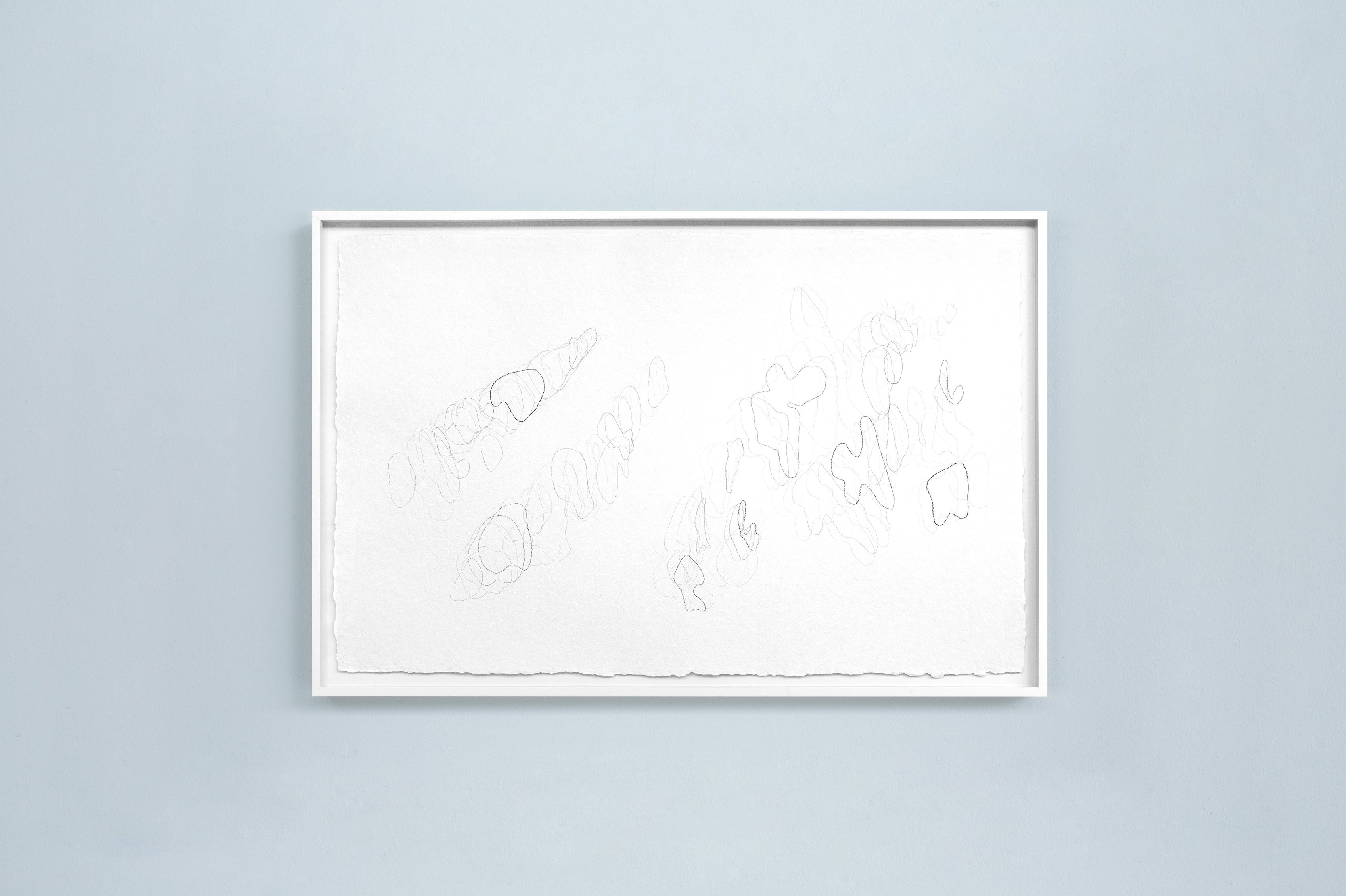
Komorebi VI, graphite and hand made paper, 50 x 75 cm. A collection of eight graphite drawings on paper, wherein the artist meticulously depicts the interplay of light filtering through trees. Each drawing intricately captures the subtle movement of sunlight across the paper surface, functioning as both a chronological map of time and a contemplative reflection on transient moments.
Photo: Felipe Ugalde

Komorebi IV, graphite and hand made paper, 50 x 75 cm. A collection of eight graphite drawings on paper, wherein the artist meticulously depicts the interplay of light filtering through trees. Each drawing intricately captures the subtle movement of sunlight across the paper surface, functioning as both a chronological map of time and a contemplative reflection on transient moments.
Photo: Felipe Ugalde

Drawing the light that filters through the trees, Berlin Tiergarten
Photo: Bruno Giliberto
Seda is a temporary environment in which a world is generated. Recovering ancestral experiences and techniques from Japan, Ruiz-Tagle reflects on the transformations of the environment in the Anthropocene through four axes of work. Ceramic pieces, silk threads dyed with Indian Sappan wood (Caesalpinia sappan) hanging from the gallery ceiling, silk paintings made using techniques from the Edo period of Japanese history (1615-1868), and hand-made paper drawings reproducing the fragmentation of light through vegetation.
Silk, the axis of this interior topology, is a material whose production chain begins with the interaction of species with the environment, as well as the body with its own processes. The overall image is that of the silk worm resting on the mulberry leaf. After ingesting it, it will generate a cocoon with the serum in which it will sleep for weeks until it transforms into a moth.
Silk thread: a material with modest reflectance, slow production, unique, and ethereal existence. Its processing involves multiple stages, each contributing to a final moment: light is a thread that will be akin to every state and organism that approaches it. Due to its organic composition and visual effect, silk is language: distant and pristine, it puts us in contact with the present and the absent, the known and the foreign. With the weight of nothingness and a unique shine, silk is an integral part of an analogy and the relationship between our perception, our bodies, light, and color over time.
Ruiz-Tagle recreates in the drawings, paintings, ceramic pieces, and the intervention of space with silk threads an artificial and momentary environment. In it, emptiness or nothingness takes on the leading role. Like the silence before a stone is thrown into a lake. The proposed topology invites us to contemplate before observing, to live before thinking, to see before acting. In this, the principle of non-action inherent in Zen wisdom becomes evident: space is also everything that is in the invisible.
Text: Teobaldo Lagos Preller